- Easy Broccoli Cheddar Soup Simple and Creamy Delight
- Pesto Chicken Wraps Wholesome and Flavorful Meal
- Irresistible Sheet Pan Garlic Steak Bites Recipe
- Chicken Enchilada Casserole Tasty and Simple Recipe
- Air Fryer Chicken Nuggets Crispy and Flavorful Bites
- Roasted Chickpea Bowl Packed with Flavorful Goodness
- Crispy Baked Chicken Tenders Easy and Flavorful Snack
- Easy Chicken Fried Rice Tasty and Quick Meal
- Spicy Thai Noodle Salad Fresh and Flavorful Meal Boost
- Classic Cobb Salad Fresh and Flavorful Recipe Guide
- Rainbow Veggie Wraps Fresh and Colorful Delight
- Southwest Chicken Alfredo Flavorful and Easy Recipe
- Strawberry Spinach Salad with Poppyseed Dressing Delight
- Chocolate Chip Zucchini Bread Healthy and Flavorful Treat
- Spicy Honey Sriracha Chicken Mouthwatering Delight
- Crispy Baked Zucchini Fries Perfect for Snacking
- Tropical Acai Smoothie Bowl Energizing Healthy Treat
- Southwest Quinoa Salad Fresh and Flavorful Delight
- Vegan Stuffed Bell Peppers Flavorful and Healthy Meal
- Classic Chicken Enchiladas Flavorful and Easy Recipe
- Mexican Quinoa Salad Fresh and Flavorful Recipe
- Chocolate Dipped Strawberries Simple and Delicious Treat
- Smashed Avocado Chickpea Sandwich Fresh and Flavorful
- Easy Breakfast Burritos Quick and Tasty Recipe
- Pesto Pasta Salad Fresh and Flavorful Recipe
- Crispy Chicken Tacos Flavorful and Easy to Make
- Caramel Apple Nachos Delightful Sweet Treat Recipe
- Savory Buffalo Chicken Lettuce Wraps Easy Recipe
- Zesty Cilantro Lime Rice Flavorful Side Dish Recipe
- Spicy Thai Noodle Salad Fresh and Flavorful Delight
- Homemade Acai Bowls Simple and Delicious Recipe
- Chicken Fajita Sheet Pan Dinner for Busy Nights
- Simple Greek Yogurt Parfait Nourishing and Tasty Treat
- No-Bake Lemon Icebox Pie Delightful and Simple Treat
- Taco Stuffed Sweet Potatoes Easy and Flavorful Recipe
- Baked Feta Pasta Simple and Flavorful Delight
- Healthy Apple Cinnamon Muffins Delightfully Simple Recipe
- Crispy Baked Coconut Shrimp Delicious for Any Meal
- Sweet Chili Chicken Bites Tasty Crunchy Delight
- Blueberry Brie Grilled Cheese Irresistible Flavor Combo
- Pizza Stuffed Waffle Snacks Irresistible and Easy Recipe
- Gooey Mozzarella Biscuit Bombs Irresistible Snack Idea

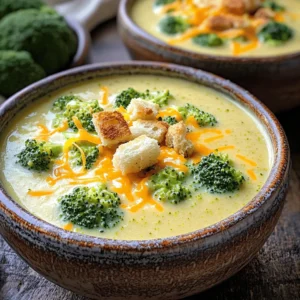
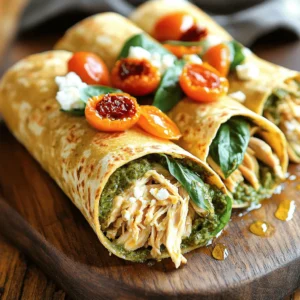
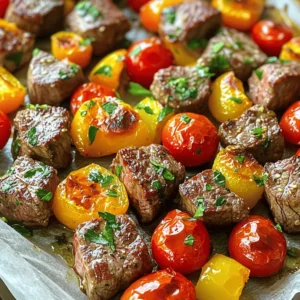
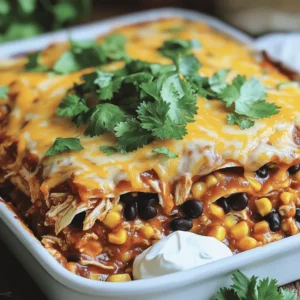

![- 1 can (15 oz) chickpeas, drained and rinsed - 2 tablespoons olive oil - 1 teaspoon smoked paprika - 1 teaspoon garlic powder - 2 cups cooked quinoa or brown rice - 1 cup cherry tomatoes, halved - 1 cucumber, diced - 1 avocado, sliced - 1 cup baby spinach or arugula - 1/4 cup tahini dressing (store-bought or homemade) - Fresh parsley or cilantro for garnish The main ingredients focus on chickpeas, which are full of protein and fiber. I use olive oil to help the spices stick. Smoked paprika gives a nice depth, while garlic powder adds flavor. These simple ingredients create a base that is both healthy and tasty. Next, I add cooked quinoa or brown rice for a filling grain. These grains provide energy and pair well with chickpeas. Cherry tomatoes add sweetness, while diced cucumber brings a refreshing crunch. Sliced avocado adds creaminess, making every bite exciting. Finally, I top the bowl with baby spinach or arugula. These greens add nutrients and color. A drizzle of tahini dressing gives a nutty flavor, and fresh herbs brighten the dish. This bowl is not just good for you; it's also a feast for the eyes. For the full recipe, check out the details in the next section. - Preheat the oven to 400°F (200°C). - In a mixing bowl, combine the rinsed chickpeas, olive oil, smoked paprika, garlic powder, cumin, salt, and pepper. Mix until each chickpea is coated well. - Spread the seasoned chickpeas on a baking sheet in a single layer. - Roast them for 25-30 minutes, shaking the pan halfway through. This step makes them crispy and golden. - While the chickpeas roast, cook quinoa or brown rice as per the package instructions. - In your bowl, start with a base of quinoa or brown rice. - Top it with the roasted chickpeas, cherry tomatoes, diced cucumber, sliced avocado, and a handful of baby spinach or arugula. - Drizzle tahini dressing over the top. Add fresh parsley or cilantro for a pop of color. - Serve this nutrient-packed bowl right away and enjoy every bite! To get crispy roasted chickpeas, start by drying them well. Use a clean towel to pat them dry. Extra moisture makes them soggy. Next, coat them evenly with olive oil and seasonings. This step is key for crispiness. Experiment with spices for more flavor. Try chili powder for heat or lemon zest for brightness. You can also mix in herbs like rosemary or thyme. This adds unique taste to your bowl. Batch cooking chickpeas and grains is a great idea. Cook a large batch of chickpeas and store them in an airtight container. They stay fresh in the fridge for up to five days. When you cook grains, make extra too. Quinoa or brown rice can be stored for a week. Keep your grains and chickpeas separate until you serve. This keeps everything fresh and tasty. Chickpeas are full of protein and fiber. They help you feel full longer. They are also low in fat, making them great for a healthy diet. Adding fresh veggies like tomatoes and cucumbers boosts your vitamins. Avocados provide healthy fats, ensuring a well-balanced meal. Keep your bowl colorful for more nutrients. Each color brings different health benefits. For the full experience, follow the [Full Recipe]. {{image_2}} You can swap quinoa for other grains. Brown rice works great and is filling. Farro adds a nutty taste, too. If you want a low-carb choice, try cauliflower rice. It’s light and still tasty. To boost plant-based protein, consider adding tofu or tempeh. Both options absorb flavors well. For gluten-free meals, choose grains like quinoa or rice. This keeps the bowl safe for all diets. Get creative with dressings! Lemon-tahini or balsamic can change the taste. You can also add roasted veggies for more flavor. Nuts add crunch and extra nutrients. Try almonds or walnuts for a tasty twist. To keep your Roasted Chickpea Bowl fresh, store it in an airtight container. This helps lock in flavor and moisture. Place it in the fridge right after serving. Leftovers can stay fresh for about three days. After that, the veggies may lose their crunch and taste. You can freeze the roasted chickpeas easily. They stay crispy when cooked and frozen. I recommend freezing them in a single layer on a baking sheet first. Once frozen, transfer them to a freezer bag. You can also freeze cooked quinoa or brown rice. To reheat, bake the chickpeas at 400°F (200°C) for about 10 minutes. Warm the grains in the microwave or stove until hot. This bowl pairs well with many side dishes. Try serving it with a light salad or some roasted veggies. It’s a great lunch option, but I love it for dinner too. You can prep it ahead for a quick meal during the week. Enjoy it any time for a tasty, healthy treat! For the full recipe, check out the detailed instructions provided above. You can easily add heat to your roasted chickpeas. Try using spices like cayenne pepper or red pepper flakes. Mix these into the chickpeas along with olive oil and seasonings. You can also drizzle hot sauce over your bowl before serving. This will give your dish a nice kick! Yes, you can use dried chickpeas! To prepare them, soak one cup of dried chickpeas overnight in water. The next day, drain and rinse them. Then, boil them in fresh water for about 1 to 1.5 hours, or until they are tender. Drain and dry them before seasoning and roasting. If you need a tahini substitute, try using almond butter or sunflower seed butter. These will give you a creamy texture. You can also mix plain yogurt with lemon juice and a bit of garlic for a tangy dressing. This works well if you avoid sesame due to allergies. In this blog post, we explored a tasty chickpea bowl recipe from start to finish. We covered the main ingredients, preparation steps, and tips to perfect your dish. Remember, you can mix grains and flavors to suit your taste. Meal prep ideas help keep your bowl ready when you need a quick meal. Whether you choose to add spice or switch up toppings, this bowl is packed with nutrition. Enjoy making this versatile dish anytime you want a healthy meal!](https://cheftaling.com/wp-content/uploads/2025/07/285cd63a-42f6-45ff-97ed-4d1327fdafe1-300x300.webp)
![- 1 lb chicken breast, cut into strips - 1 cup breadcrumbs (preferably panko for extra crunch) - ½ cup grated Parmesan cheese - 1 teaspoon garlic powder - 1 teaspoon paprika - ½ teaspoon salt - ½ teaspoon black pepper - 1 large egg - 2 tablespoons Dijon mustard - 1 tablespoon honey - Cooking spray To make crispy baked chicken tenders, gather your ingredients first. Use fresh chicken breast for the best taste. Panko breadcrumbs give a great crunch. Parmesan cheese adds flavor and helps the coating stick. Garlic powder and paprika bring warmth and a nice color. Each serving has around: - Calories: 320 - Protein: 28g - Fats: 14g - Carbs: 20g This dish is a tasty option for a snack or meal. It packs protein, which is great for energy. - Baking sheet - Mixing bowls - Whisk - Measuring cups These tools make cooking easy. A baking sheet helps the tenders crisp up in the oven. Mixing bowls are key for combining ingredients. A whisk is perfect for blending the egg mixture. Measuring cups ensure you use the right amounts. For the full recipe, refer back to the recipe section. 1. First, preheat your oven to 400°F (200°C). This helps the chicken cook evenly. 2. Line a baking sheet with parchment paper. Lightly spray it with cooking spray to prevent sticking. 3. In a large bowl, mix the breadcrumbs with grated Parmesan cheese, garlic powder, paprika, salt, and black pepper. Stir well to combine all the flavors. 4. In another bowl, whisk together the egg, Dijon mustard, and honey until smooth. This will help the coating stick. 1. Take each chicken strip and dip it into the egg mixture. Let any extra egg drip off. 2. Next, place the chicken strip in the breadcrumb mix. Press down to coat it well. 3. A good tip is to ensure you press the breadcrumbs onto the chicken. This helps the coating stick during baking. 1. Place the coated chicken tenders on your prepared baking sheet. Leave some space between each piece. 2. Bake them in the oven for 15 to 20 minutes. You want the chicken cooked through and the coating golden brown. 3. For an extra crispy finish, turn on the broiler for the last 2 to 3 minutes. Watch closely to avoid burning. This method ensures crispy baked chicken tenders that are easy to make and full of flavor! Check the [Full Recipe] for more details. To get that perfect crispy texture, use panko breadcrumbs. Panko gives a light and airy crunch that regular breadcrumbs can't match. Their larger flakes help create a golden, crispy layer. Spray your chicken tenders with cooking spray before baking. This extra layer of oil helps the coating crisp up nicely in the oven. Pair your crispy baked chicken tenders with your favorite sauces. Ketchup, ranch, or honey mustard work well. For a fun twist, try a spicy dipping sauce. You can also serve these tenders with fresh veggies or a light salad. When plating, stack the tenders and add a sprig of parsley for a pop of color. This makes your dish look even more appealing. One common mistake is overcrowding the baking sheet. Make sure to leave space between the chicken tenders. This allows hot air to circulate and crisp them evenly. Another mistake is not letting the chicken cool before serving. If you serve them too hot, the coating might come off. Let them sit for a few minutes to firm up before enjoying your delicious snack. {{image_2}} You can make crispy baked chicken tenders even healthier. Here are two great options: - Gluten-free breadcrumb options: Use gluten-free breadcrumbs or crushed rice cereal. Both give a nice crunch. - Low-carb versions using almond flour: Swap breadcrumbs for almond flour. This keeps the meal low in carbs and adds a nutty flavor. Want to spice things up? Consider adding some new flavors: - Adding spices like cayenne or Italian herbs: A pinch of cayenne gives heat. Italian herbs add freshness. Experiment with what you like best. - Marinades for different flavor profiles: Marinade chicken tenders in buttermilk, soy sauce, or lemon juice. Each offers a unique taste before you coat and bake. Try these methods for different results: - Air frying option for alternate cooking method: Air fryers cook tenders quickly. They make them crispy without much oil. - Grilling as a summer variation: Grilling adds a smoky flavor. Simply cook the marinated chicken on the grill for a tasty twist. These variations keep your chicken tenders exciting. For the full recipe, check out the complete guide above. To keep your crispy baked chicken tenders fresh, store them in an airtight container. Place a paper towel at the bottom to absorb moisture. This helps maintain their crispiness. Refrigerate them within two hours of cooking. They will stay good for about three days. When you want to enjoy leftovers, reheating them well is key. The oven is best for keeping that crispy texture. Preheat your oven to 375°F (190°C) and place the tenders on a baking sheet. Heat for about 10-15 minutes. This method makes them crunchy again. If you use the microwave, they may become soggy. If you must use the microwave, heat them for 1-2 minutes, but be aware of the texture change. You can freeze chicken tenders for longer storage. To freeze, let them cool completely. Wrap each tender in plastic wrap and place them in a freezer bag. Remove as much air as possible. They can stay frozen for up to three months. To reheat, thaw them in the fridge overnight. Then, bake at 375°F (190°C) for 15-20 minutes, until heated through. This method helps to keep them tasty and enjoyable. For the complete recipe, check out the Full Recipe. Crispy baked chicken tenders stay good for about 3 to 4 days in the fridge. Store them in an airtight container to keep them fresh. When you want to eat them again, check for any off smells or changes in texture. If they look or smell fine, they are likely still good to eat. Yes, you can use frozen chicken for this recipe. Just make sure to thaw it first. The best way is to leave it in the fridge overnight. If you’re in a hurry, you can soak it in cold water for about an hour. After thawing, you can easily cut the chicken into strips and follow the full recipe. There are many tasty dips that go well with baked chicken tenders. Here are some of my favorites: - Honey mustard: A classic choice that adds a sweet touch. - Ranch dressing: Creamy and tangy, it complements the crispy chicken well. - Barbecue sauce: A smoky flavor that many love. - Buffalo sauce: For those who like a spicy kick. - Ketchup: A simple and popular option for kids. Feel free to mix and match to find your favorite dip! This blog post guided you through making crispy baked chicken tenders. We covered the key ingredients, shared careful preparation steps, and highlighted tips for texture and serving. Remember, using panko breadcrumbs makes a big difference. Also, keep an eye on your baking sheet to avoid overcrowding. Whether you want to add spices or try healthier options, the possibilities are endless. With these tips, you’ll create a tasty dish that everyone will enjoy. Happy cooking!](https://cheftaling.com/wp-content/uploads/2025/07/3d26b636-b80d-423c-8eb5-2a9f8d41f5b6-300x300.webp)
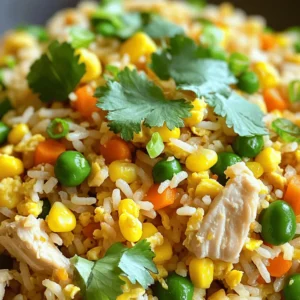
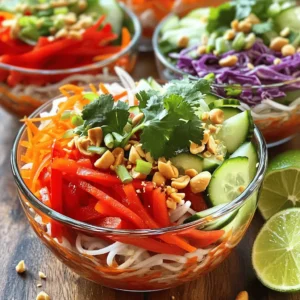
![Classic Cobb Salad is fresh and filling. Here are the key ingredients you need: - 4 cups mixed salad greens (romaine, arugula, and spinach) - 2 large eggs, hard boiled and sliced - 1 cup cooked chicken breast, diced - 1 large avocado, diced - 1 cup cherry tomatoes, halved - 1/2 cup crumbled blue cheese - 1/4 cup cooked bacon bits (optional) - 1/2 cup cucumber, sliced - 1/4 cup red onion, thinly sliced These ingredients create a colorful and tasty dish. The greens provide a crisp base. The chicken adds protein, while the eggs give richness. Avocado brings creaminess, and tomatoes add sweetness. Blue cheese gives a bold flavor, and bacon adds a savory crunch. You can customize your Cobb Salad to fit your taste. Here are some optional ingredients: - Chopped nuts for extra crunch - Fresh herbs like parsley or cilantro for brightness - Bell peppers for extra color and sweetness - Different cheeses like feta or goat cheese Feel free to mix and match. This makes the salad your own. A good dressing ties everything together. For a classic Cobb Salad dressing, use: - 1/4 cup olive oil - 2 tablespoons red wine vinegar (or apple cider vinegar for a twist) - 1 teaspoon Dijon mustard - Salt and pepper to taste This dressing is simple yet full of flavor. It adds a tangy brightness to the salad. You can adjust the vinegar for more zest or the mustard for a kick. For a creamier option, try adding yogurt or sour cream. Remember, you can find the full recipe for this delicious salad [Full Recipe]. Enjoy crafting your perfect Cobb Salad! To start, you need to prep your ingredients. First, hard boil the eggs. Place them in a pot of water. Bring it to a boil, then let it simmer for 10 minutes. Next, cool the eggs under cold water. This helps them peel easily. Once cooled, peel and slice the eggs. Now, take your mixed salad greens. I like to use romaine, arugula, and spinach. Wash them well and spin them dry. This makes the salad crisp and fresh. Dice the cooked chicken breast and avocado. Halve the cherry tomatoes and slice the cucumber. For the red onion, slice it thinly. In a large bowl, start with the mixed greens as your base. This gives your salad a nice, fresh look. Next, arrange the diced chicken, diced avocado, halved cherry tomatoes, and cucumber slices in neat rows over the greens. Now it’s time for the blue cheese. Crumble it on top for a salty kick. If you like bacon, sprinkle the bacon bits over the salad. Finally, add the thinly sliced red onion. This adds a nice crunch and flavor. For the dressing, grab a separate bowl. Whisk together olive oil, red wine vinegar, and Dijon mustard. Add salt and pepper to taste. This will give your salad a zesty flavor. Once your dressing is ready, drizzle it over the arranged salad just before serving. This keeps the greens fresh and crisp. If you want, you can gently toss the salad for a mixed flavor. Or, serve it as is for a beautiful presentation. For the complete steps and tips, check out the Full Recipe. To hard boil eggs, start with fresh eggs. Place them in a pot and cover them with cold water. Bring the water to a boil over high heat. Once boiling, turn off the heat and cover the pot. Let the eggs sit for about 12 minutes. After that, cool them in ice water for a few minutes. Then, crack and peel the shells. This method helps prevent green rings around the yolk and keeps the eggs tender. Fresh ingredients make the Cobb salad shine. When picking salad greens, look for vibrant colors and no wilted leaves. For tomatoes, choose firm ones with smooth skin. Avocados should be slightly soft to the touch but not mushy. The chicken should have a pleasant smell, and bacon should be crisp. Always check the sell-by dates on packaged items like cheese and dressings. For a beautiful Cobb salad, presentation matters. Use a large clear bowl to show off the colorful layers. You can also serve the salad on individual plates for a nice touch. Arrange the ingredients in neat rows for a stunning look. Garnish with extra blue cheese and a sprig of fresh herb for added appeal. This makes your salad not just tasty but also a feast for the eyes. {{image_2}} You can easily make a Cobb salad vegetarian or vegan. For a vegetarian dish, skip the chicken and bacon. Instead, add protein-rich ingredients like chickpeas or quinoa. You can also use feta or a dairy-free cheese. For a vegan option, replace eggs with sliced avocado or roasted chickpeas. Use a vegan dressing made with tahini or avocado oil. These swaps keep the salad tasty and filling. If you want to switch up proteins, there are many options. Grilled shrimp or salmon add a nice twist. You can also use turkey or tofu for a different flavor. For a meat-free option, try lentils or black beans. Each protein brings its unique taste and texture to the classic Cobb salad. Dressings make the salad come alive. While a classic vinaigrette works well, you can explore fun flavors. Try a spicy chipotle dressing for a kick or a creamy avocado dressing for richness. Adding toppings like roasted nuts, seeds, or fresh herbs can enhance the taste. You can even add fruits like apples or berries for a sweet touch. These twists keep the salad fresh and exciting. For the full recipe, check the Crispy Cobb Salad Delight section above. To keep your Cobb salad fresh, first, separate the dressing from the salad. This keeps the greens crisp and prevents sogginess. Place any leftover salad in an airtight container. Make sure to cover it tightly. Store it in the fridge for up to three days. If you have leftover dressing, store it in a small jar. It can last up to a week in the refrigerator. I recommend using glass containers for storing salads. Glass keeps food fresh and is easy to clean. Choose containers that have tight-fitting lids. This helps keep your Cobb salad safe from air and moisture. If you prefer plastic, look for BPA-free options. These are safe and can save weight in your lunch bag. If you have leftover chicken from your Cobb salad, reheating it is simple. Place the chicken in a microwave-safe dish. Add a splash of water to keep it moist. Cover the dish with a lid or microwave-safe cover. Heat for 30 seconds at a time until the chicken is hot. Always check the temperature to ensure it is safe to eat. Enjoy your chicken warm, but avoid reheating the salad greens. They taste best fresh! A Classic Cobb Salad has many tasty ingredients. You need mixed greens, like romaine, arugula, and spinach. Add hard-boiled eggs, diced chicken, and avocado. Cherry tomatoes, blue cheese, and bacon bits bring in extra flavor. For crunch, include sliced cucumber and red onion. This salad is colorful and full of textures. Yes, you can make Cobb Salad ahead of time. Prepare the ingredients and store them separately. Keep the greens fresh in a bag or container. You can mix the other items in another container. Just add the dressing right before serving. This keeps the salad crisp and fresh. If you don't like blue cheese, you have options. Feta cheese adds a salty kick. Goat cheese is another great choice; it is creamy and tangy. Parmesan cheese can give a nutty flavor too. Use what you enjoy most for a tasty twist on this salad. To keep your salad fresh, store it in an airtight container. Use paper towels to absorb moisture inside. This helps prevent sogginess. If using dressing, keep it separate until ready to eat. Following these tips will help you enjoy your Cobb Salad longer. For the full recipe, check out the Crispy Cobb Salad Delight section. Cobb salad is a versatile dish that offers many options for everyone. We covered classic ingredients, optional add-ins, and tasty dressings. You learned how to prepare, layer, and dress your salad just right. Remember the tips for hard-boiling eggs and choosing fresh ingredients to enhance your dish. Variations let you personalize your salad, and proper storage helps keep leftovers fresh. Enjoy experimenting with flavors and make your own perfect Cobb salad.](https://cheftaling.com/wp-content/uploads/2025/07/2e815860-f315-4635-8e9e-d361cd3e9b2f-300x300.webp)
![- 4 large whole wheat tortillas - 1 cup red bell pepper, thinly sliced - 1 cup yellow bell pepper, thinly sliced - 1 cup cucumber, julienned - 1 cup carrot, grated - 1 cup purple cabbage, shredded - 1 avocado, sliced - 1 cup hummus (any flavor) - 1 tablespoon lemon juice - Salt and pepper to taste - Fresh cilantro or parsley, for garnish Each ingredient in these wraps serves a purpose. Whole wheat tortillas provide fiber and energy. Red and yellow bell peppers add vitamin C, which helps boost your immune system. Cucumbers add hydration. Carrots bring in beta-carotene for your eyes. Purple cabbage is rich in antioxidants. Avocado contributes healthy fats for heart health, while hummus adds protein and flavor. Lemon juice helps improve digestion and keeps the avocado fresh. Finally, herbs like cilantro or parsley can add even more nutrients. I prefer using fresh veggies for the best taste and crunch. Fresh ingredients also have more nutrients. However, frozen veggies can be a great option when fresh ones aren't available. Just make sure to thaw and drain them well. This will help keep your wraps from getting soggy. You can also use frozen hummus if you are in a pinch. Just let it thaw before spreading it on the tortilla. First, we need to prepare the veggies. Slice the red and yellow bell peppers into thin strips. Next, julienne the cucumber into long, thin pieces. Grate the carrot using a box grater. Finally, shred the purple cabbage. This colorful mix will make your wraps pop! Now, let’s layer our veggies. Start with a large whole wheat tortilla on a flat surface. Spread a thick layer of hummus across the tortilla. Leave about an inch from the edges. Next, lay the red bell pepper strips first. Follow with the yellow bell pepper, cucumber, grated carrot, and shredded cabbage. Place the avocado slices on top. This rainbow pattern looks great and tastes amazing! Wrapping your veggie creation is simple. Begin at the edge closest to you. Fold it over the filling and press down gently. Roll it away from you, tucking in the sides as you go. This keeps everything secure inside. Once wrapped, use a sharp knife to cut it in half. Repeat this for the other tortillas. Enjoy your Rainbow Veggie Wraps fresh or store them for later! For the full recipe, check [Full Recipe]. To keep your veggies fresh, store them in a cool, dry place. Wrap cut veggies in a damp paper towel. This helps them stay crisp. Use airtight containers for sliced veggies. You can also add a little lemon juice to prevent browning. Keeping them separate until you are ready to use them helps too. Hummus adds creaminess to rainbow veggie wraps. For a twist, try roasted red pepper hummus. It pairs well with sweet bell peppers. You can also use garlic hummus for a zing. If you like spice, go for spicy hummus. Each flavor can change the wrap's taste, making it fun to explore. You can easily change these wraps to fit your diet. If you want a low-carb option, use large lettuce leaves instead of tortillas. For a protein boost, add grilled chicken, tofu, or beans. If you are vegan, stick with plant-based proteins. Discuss your preferences to make the wraps your own. For the full recipe, follow the steps outlined above for a delightful meal that fits your needs! {{image_2}} You can swap tortillas for lettuce or rice paper. Lettuce wraps give a crisp bite. Use large leaves like romaine or butter lettuce. They are low in carbs and add a fresh taste. Rice paper adds a fun twist. Just soak it in warm water until soft. Then, wrap your veggies inside. Both options are light and tasty. Adding protein makes your wrap more filling. Grilled chicken is a great choice. It adds flavor and keeps it hearty. You can also use tofu for a plant-based option. Just press it to remove excess water, then grill or sauté. Beans are another easy option. Black beans or chickpeas boost fiber and protein. Mix them in with your veggies for a satisfying meal. Using seasonal veggies can enhance your wrap. In spring, try adding radishes or snap peas for crunch. Summer brings zucchini or cherry tomatoes for sweetness. In fall, roasted sweet potatoes or butternut squash offer warmth. Winter veggies like kale or Brussels sprouts can add depth. Choose what's fresh for the best flavor. Each season brings new colors and tastes to your wraps. For the full recipe, check out the original instructions and ingredient list. To store leftover wraps, wrap them tightly in plastic wrap. You can also use aluminum foil. Place them in an airtight container. This keeps them fresh and prevents drying out. If you have cut wraps, store each half in separate containers. When prepping these wraps, make all the veggies ahead. Keep them in separate containers. This way, you can mix and match your wraps each day. You can also prepare the hummus in bulk. Use different flavors to change it up. Making wraps this way saves time and keeps things fun. Fresh veggies last about 3 to 5 days in the fridge. Make sure they are dry before storing. Hummus can last about a week in the fridge. If you buy store-bought, check the label for dates. Whole wheat tortillas stay fresh for about 2 weeks if sealed well. Always check for any signs of spoilage before using. The best way to prevent avocado from browning is to use lemon juice. The acid in lemon juice slows down the oxidation process. I mix the sliced avocado with a tablespoon of lemon juice. This keeps it fresh and bright. Add a pinch of salt and pepper for taste. Always cut the avocado right before you use it for the best results. Yes, you can use many different sauces instead of hummus. Try using tzatziki, guacamole, or a yogurt-based sauce. Each sauce adds a unique flavor to the wraps. You can even use a spicy sauce if you want a kick. Just make sure the sauce spreads easily on the tortilla. To make these wraps spicier, you can add spicy sauces. Hot sauce or sriracha works great. You can also add sliced jalapeños for a fresh kick. Another option is to mix some chili powder into your hummus or sauce. Adjust the spice level to match your taste. Enjoy the heat! Rainbow veggie wraps are a fun and healthy meal. We covered the key ingredients, their benefits, and how to keep them fresh. You can layer the veggies for a pretty look and choose your favorite sauces. There are many ways to customize your wrap with different proteins and vegetables. In the end, these wraps are flexible and easy to make. With the right tips, you can enjoy fresh meals all week long. So, get creative and enjoy your tasty, colorful wraps!](https://cheftaling.com/wp-content/uploads/2025/07/72dc0b3a-c650-4175-9190-9741383fa32c-300x300.webp)
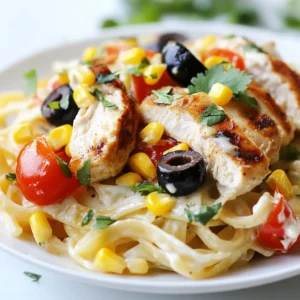
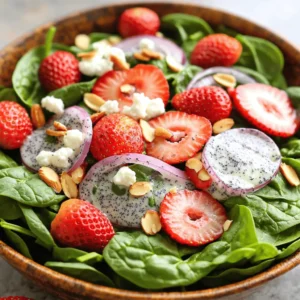
![- 1 ½ cups grated zucchini (about 1 medium zucchini) - 1 cup all-purpose flour - ½ cup whole wheat flour - 1 teaspoon baking soda - ½ teaspoon baking powder - ½ teaspoon salt - 1 teaspoon ground cinnamon - ⅓ cup vegetable oil - ½ cup brown sugar, packed - ½ cup granulated sugar - 2 large eggs - 1 teaspoon vanilla extract - ½ cup semi-sweet chocolate chips - ¼ cup chopped walnuts (optional) Each slice of Chocolate Chip Zucchini Bread has about 150 calories. Zucchini adds moisture and fiber. This helps keep the bread soft and light. Plus, zucchini is low in calories but high in nutrients. It gives you vitamins and minerals with every bite. Using whole wheat flour adds extra fiber, making it a smart choice. The sugars balance with the chocolate, making each slice a treat. The walnuts, if you add them, add healthy fats and protein. So, while this bread is sweet, it also has healthy perks. Enjoying it gives you a boost of energy without too much guilt. If you want to dive deeper, check out the Full Recipe to get all the details! - Preheat the oven to 350°F (175°C) and grease a 9x5 inch loaf pan. - Grate 1 medium zucchini. Sprinkle a pinch of salt on it. Let it sit for 10 minutes. Then, squeeze out extra moisture using a clean towel. - In a large bowl, mix together: - 1 cup all-purpose flour - ½ cup whole wheat flour - 1 teaspoon baking soda - ½ teaspoon baking powder - ½ teaspoon salt - 1 teaspoon ground cinnamon - In a separate bowl, whisk: - ⅓ cup vegetable oil - ½ cup brown sugar - ½ cup granulated sugar - 2 large eggs - 1 teaspoon vanilla extract - Add the drained zucchini to the wet mixture and stir well. - Gradually fold the wet mix into the dry ingredients. Do not overmix. - Gently fold in: - ½ cup semi-sweet chocolate chips - ¼ cup chopped walnuts (optional) - Pour the batter into the prepared loaf pan. Smooth the top with a spatula. - Bake for 50-60 minutes. Check doneness with a toothpick. If it comes out clean, it’s done. To make sure your Chocolate Chip Zucchini Bread stays moist, squeeze out excess water from the zucchini. Let the grated zucchini sit with a pinch of salt for 10 minutes, then wring it out in a clean towel. This helps keep the bread soft and fluffy. Avoid overmixing the batter. Stir gently until the dry and wet ingredients just come together. Overmixing can make the bread tough. For serving, slice the bread and place it on a wooden board. You can add a dollop of whipped cream cheese on the side for a tasty touch. Pair this bread with coffee or a glass of cold milk for a delightful treat. Be careful not to overbake your bread. Check it after 50 minutes by inserting a toothpick. If it comes out clean, your bread is ready. Also, make sure to prepare the zucchini correctly. Grate it fine and remove the moisture. Using wet zucchini can lead to soggy bread. For the full recipe, check here: [Full Recipe]. {{image_2}} You can easily make this bread gluten-free. Use gluten-free all-purpose flour instead of regular flour. Look for a blend that contains xanthan gum for texture. You may need to add a bit more moisture. This helps keep the bread soft and moist. For those following a vegan diet, egg replacements work well. You can use flaxseed meal mixed with water. Two tablespoons of flaxseed meal and three tablespoons of water replace one egg. For dairy-free options, swap out the vegetable oil with melted coconut oil or applesauce. This keeps the bread moist and adds a slight sweetness. Want to spice things up? You can add nutmeg or ginger to the batter. Just a quarter teaspoon of either will enhance the flavor. You can also mix in dried fruits or nuts for added texture. Try raisins, cranberries, or chopped pecans for a twist. These little changes make each loaf unique and delicious. For the full recipe and details on making this tasty treat, check out the [Full Recipe]. To keep your Chocolate Chip Zucchini Bread fresh, use an airtight container. I recommend a plastic or glass container. This helps keep moisture inside. If you prefer to store it at room temperature, it can last for 2-3 days. If you want to extend its life, place it in the fridge. In the fridge, it stays fresh for up to a week. Just make sure to wrap it well to avoid drying out. If you want to keep your bread longer, freezing is a great option. First, let the bread cool completely. Then wrap it tightly in plastic wrap. Next, place the wrapped bread in a freezer bag. This way, it can last for about 3 months in the freezer. When you’re ready to enjoy it, take it out and let it thaw in the fridge overnight. You can also thaw it at room temperature for a few hours. To warm it up, pop slices in the toaster. This brings back the fresh-baked taste. Enjoy your delicious Chocolate Chip Zucchini Bread anytime! For the full recipe, check out the section above. Yes, you can use frozen zucchini. First, thaw it completely. You can do this by placing it in the fridge overnight or using the microwave. After thawing, drain the zucchini well. This step is key because excess water can make your bread too wet. Squeeze the zucchini in a clean towel or cheesecloth to remove extra moisture. This will help keep your Chocolate Chip Zucchini Bread moist but not soggy. To check if your bread is done, look for a few signs. First, the bread should have a nice golden-brown color on top. You can also gently press the top; it should spring back without leaving a dent. If you like, use a toothpick to test the center. It should come out clean or with a few moist crumbs. Even if the toothpick test is good, check that the edges of the bread pull away slightly from the pan. This means it’s ready! If you have extra zucchini, there are many fun ways to use it! You can make zucchini muffins or add it to pancakes for a healthy twist. Grate zucchini into salads for added crunch and nutrition. You can also use it in savory dishes like stir-fries or fritters. If you want something sweet, try a zucchini chocolate cake or zucchini brownies. These options keep the fun going in the kitchen while using up those extra veggies. For more ideas, check out the Full Recipe and explore different ways to enjoy zucchini! This blog shared the key elements to make delicious Chocolate Chip Zucchini Bread. We covered the list of ingredients, preparation steps, and baking tips for great texture. I shared tasty variations for gluten-free and vegan diets too. Remember to store your bread properly to keep it fresh. Baking is all about fun and trying new things. So, enjoy making this bread and let your creativity shine!](https://cheftaling.com/wp-content/uploads/2025/07/a46ee9d1-7fb1-478f-bdd6-c8ca288451fc-300x300.webp)
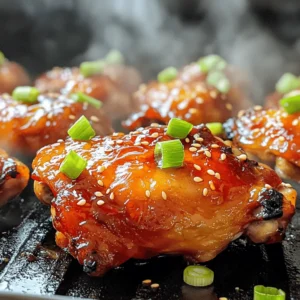
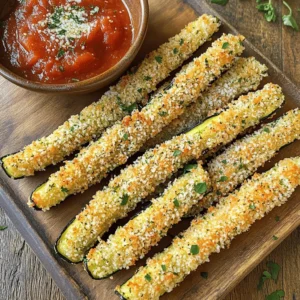
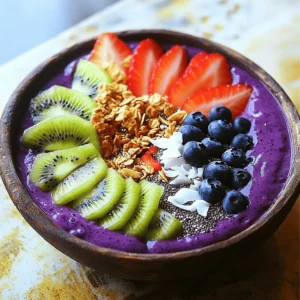
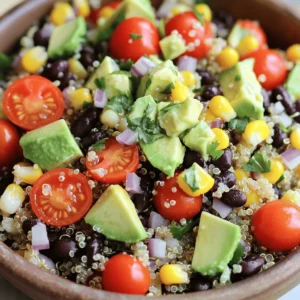
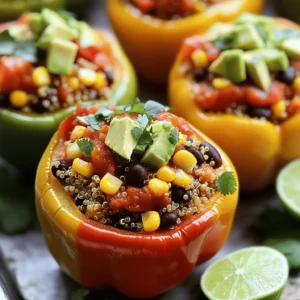
![To make classic chicken enchiladas, you need a few key items: - 2 cups cooked shredded chicken - 1 cup enchilada sauce (store-bought or homemade) - 1 cup shredded cheddar cheese - 1 small onion, finely chopped - 1 tablespoon olive oil - 8 small corn or flour tortillas These ingredients form the base of your enchiladas. The cooked shredded chicken adds protein. The enchilada sauce brings flavor, while the cheese provides creaminess. For extra taste, consider adding: - 1 teaspoon ground cumin - 1 teaspoon garlic powder - 1 teaspoon onion powder - Fresh cilantro, chopped (for garnish) - Sour cream (for serving) These optional ingredients enhance the dish. Spices like cumin, garlic, and onion powder deepen the flavors. Fresh herbs like cilantro brighten the plate. Sour cream adds a creamy touch when you serve your enchiladas. For the complete recipe, check out the [Full Recipe]. First, shred the chicken. You can use rotisserie chicken for ease. It saves time and adds great flavor. Next, prepare the sauces and spices. Measure out 1 cup of enchilada sauce. You can use store-bought or homemade. Gather your spices: 1 teaspoon each of ground cumin, garlic powder, and onion powder. Now, it’s time to fill the tortillas. Take a tortilla and lay it flat. Add a generous scoop of the chicken mixture to the center. Roll it up tightly and place it seam-side down in a greased 9x13 inch baking dish. Repeat this for all tortillas. As you fill them, make sure to leave some space between each one. Preheat the oven to 375°F (190°C). Once your enchiladas are in the dish, pour the remaining enchilada sauce over them. Make sure it covers each enchilada evenly. Sprinkle the rest of the cheddar cheese on top. Cover the dish with aluminum foil. Bake for 20 minutes. Remove the foil and bake for another 10 minutes. This helps the cheese bubble and turn golden. Now you’re ready to enjoy your flavorful chicken enchiladas! To keep your tortillas pliable, you can warm them up. Heat them in a pan for about 30 seconds on each side. You can also wrap them in a damp paper towel and microwave them for 20 seconds. This helps avoid cracks when you roll them. To avoid soggy enchiladas, don't soak the tortillas in sauce. Instead, fill them, roll them, and place them in the baking dish. Pour the sauce over the top just before baking. This keeps the tortillas firm. For side dishes, consider serving rice or beans. Mexican rice adds a nice touch. Refried beans also work well and add protein. Garnishes can enhance the flavor of your enchiladas. Fresh cilantro adds a bright taste. Slices of avocado or a dollop of sour cream can also make each bite creamy and rich. For more ideas, you can explore the Full Recipe. {{image_2}} To spice up your filling, consider adding some diced jalapeños or green chiles. These ingredients bring a nice heat without overpowering the dish. You can also mix in black beans for extra fiber and texture. For a vegetarian version, replace the chicken with roasted vegetables like bell peppers, zucchini, or mushrooms. These options add flavor and freshness to your enchiladas. While traditional enchilada sauce is great, you can experiment with other sauces. Try using salsa verde for a tangy twist or mole for a rich depth of flavor. If you prefer creamier enchiladas, make a creamy sauce by blending sour cream with salsa. This adds a smooth texture and a hint of tanginess. You can customize the sauce to fit your taste. Each variation keeps things exciting! To keep your chicken enchiladas fresh, store them in an airtight container. Place them in the fridge within two hours of cooking. They will last for about three to four days. If you want to save them longer, freezing is a great option. To freeze, wrap each enchilada in plastic wrap. Then put them in a freezer-safe bag. They can last up to three months in the freezer. To enjoy your enchiladas again, reheating them properly is key. Preheat your oven to 350°F (175°C). Place the enchiladas in an oven-safe dish. Cover them with foil to keep moisture in. Heat for about 20 minutes or until warm. If you use a microwave, place them on a plate and cover with a damp paper towel. Heat in short bursts of 30 seconds until hot. This way, your enchiladas stay moist and tasty. You can use cooked shredded chicken for enchiladas. Rotisserie chicken works great because it's easy and adds flavor. You can also boil or bake chicken breasts and then shred them. The key is to ensure the chicken is moist and seasoned well. Adding spices, like cumin and garlic powder, enhances the taste. Yes, you can prepare enchiladas in advance. Assemble them up to 24 hours ahead and store them in the fridge. When you're ready to bake, just pour the sauce over and bake as directed. This saves time and makes for a quick meal on busy nights. If you don't have enchilada sauce, you can use salsa or tomato sauce. You can also blend some diced tomatoes with spices for a homemade version. Adding a bit of chili powder or cumin can help mimic the enchilada flavor. Be creative; there are many options! - Read the detailed recipe here: Savory Chicken Enchiladas You learned how to make flavorful chicken enchiladas. We covered essential ingredients, optional spices, and storage tips. Remember, keeping tortillas pliable is key. Get creative with sauces and veggie options for variety. Don’t forget to serve with fresh garnishes. These enchiladas are sure to impress! Enjoy creating this tasty dish in your kitchen. With practice, you’ll master your own perfect recipe.](https://cheftaling.com/wp-content/uploads/2025/07/3f67609a-836b-4a2c-bcc3-6871d53e1759-300x300.webp)
![To make a delicious Mexican quinoa salad, you will need: - 1 cup quinoa, rinsed - 2 cups vegetable broth - 1 can (15 oz) black beans, rinsed and drained - 1 cup cherry tomatoes, halved - 1 avocado, diced - 1 cup corn (fresh, frozen, or canned) - 1 bell pepper (red or yellow), diced - 1/4 cup red onion, finely chopped - 1/2 cup fresh cilantro, chopped - Juice of 2 limes - 2 tablespoons olive oil - 1 teaspoon ground cumin - 1/2 teaspoon chili powder - Salt and pepper to taste You can add some optional ingredients to enhance taste: - Jalapeño, diced for spice - Cotija cheese for creaminess - Chopped green onions for freshness - Diced cucumber for crunch This salad is packed with nutrients: - Quinoa is high in protein and fiber. - Black beans add more protein and iron. - Avocado provides healthy fats and vitamins. - Tomatoes are rich in antioxidants. - This salad is low in calories and very filling. Enjoy this fresh, colorful salad that not only tastes great but also fuels your body! For the full recipe, check the details above. To start, rinse 1 cup of quinoa under cold water. This step removes the bitter coating. Next, in a medium saucepan, combine the rinsed quinoa with 2 cups of vegetable broth. Bring it to a boil over high heat. Once it boils, lower the heat, cover, and let it simmer for about 15 minutes. The quinoa is done when it absorbs all the liquid. Remove it from the heat and let it cool. Grab a large mixing bowl. Add the following fresh ingredients: - 1 can (15 oz) black beans, rinsed and drained - 1 cup cherry tomatoes, halved - 1 avocado, diced - 1 cup corn (fresh, frozen, or canned) - 1 bell pepper (red or yellow), diced - 1/4 cup red onion, finely chopped - 1/2 cup fresh cilantro, chopped Mix these veggies together to distribute the colors and flavors evenly. In a small bowl, whisk together the dressing ingredients. Combine the juice of 2 limes, 2 tablespoons of olive oil, 1 teaspoon of ground cumin, and 1/2 teaspoon of chili powder. Add salt and pepper to taste. This dressing brings zest to the salad and ties all the flavors together. Once the quinoa has cooled slightly, fluff it with a fork. Add the quinoa to the large bowl with the vegetables. Pour the dressing over the mixture. Gently toss everything until it is evenly coated. Taste and adjust the seasoning if needed. For the best flavor, chill the salad in the refrigerator for at least 30 minutes before serving. This wait allows the flavors to meld beautifully. For the full recipe, check the complete instructions above. To cook quinoa perfectly, rinse it first. Rinsing washes away the bitter coating. Use a medium saucepan. Combine one cup of rinsed quinoa with two cups of vegetable broth. Bring it to a boil over medium heat. Reduce the heat and cover the pot. Simmer for about 15 minutes. When the liquid absorbs, fluff it with a fork. Let it cool before mixing it with other ingredients. For serving, I love using a large bowl. This makes it easy for guests to help themselves. Garnish with fresh cilantro and lime wedges for a pop of color. You can also serve it in lettuce wraps. It adds a nice crunch. This salad pairs well with grilled chicken or fish. Enjoy it as a light lunch or a side dish at dinner. To boost flavors, use fresh lime juice. It brightens every bite. Adding cumin and chili powder gives depth. For a twist, try adding diced jalapeños for heat. You can also mix in some cheese like feta or cotija for creaminess. Experiment with herbs like parsley or mint for freshness. Always taste and adjust the seasoning as you mix. This will ensure a delicious balance in every mouthful. Check out the [Full Recipe] for detailed steps on making this vibrant dish. {{image_2}} You can easily boost the protein in your salad. Try adding grilled chicken, shrimp, or tofu. Each option brings a unique flavor. For a plant-based choice, chickpeas work well too. They add a nice texture and protein punch. The dressing can change your salad's taste completely. Instead of lime and olive oil, use a tahini dressing for a nutty flavor. A cilantro-lime vinaigrette can add freshness. You can also try a spicy chipotle dressing for a kick. Each dressing can create a new experience. Don't worry if you lack some ingredients. You can swap black beans for pinto beans or kidney beans. If you don’t have cherry tomatoes, use regular diced tomatoes. For the bell pepper, any color works. You can even skip the onion if you prefer. These swaps make the salad flexible and fun. For the complete recipe of this vibrant dish, check out the Full Recipe! Store any leftover salad in an airtight container. Make sure it is sealed tightly. This helps keep it fresh for a few days. You can keep it in the fridge for up to three days. If you see any brown spots on the avocado, just scoop them off. You can freeze quinoa salad, but it may change the texture. To freeze, place it in a freezer-safe bag. Remove as much air as possible before sealing. It can last for up to three months. When you're ready to eat, thaw it overnight in the fridge. When you serve the salad after storage, give it a good mix. This helps to combine the flavors again. If the salad seems dry, add a splash of lime juice or olive oil. Taste it and adjust the seasoning if needed. Enjoy your fresh flavors! For the complete recipe, check out the Full Recipe section. Yes, you can make Mexican Quinoa Salad ahead of time. It tastes even better after sitting. Just chill it in the fridge for at least 30 minutes. This helps the flavors mix well. You can prepare it a day in advance too. Just store it in an airtight container. You can serve Mexican Quinoa Salad with many dishes. It pairs well with grilled chicken or shrimp. Try it next to tacos for a fun meal. You can also serve it with fish for a light dinner. Add some tortilla chips for crunch. This salad goes great with salsas or guacamole too. Yes, quinoa is gluten-free. It comes from a seed, not a grain. This makes it a great option for those avoiding gluten. You can enjoy it safely in many dishes. Quinoa is also high in protein and fiber. This adds to its health benefits. This article covered how to make Mexican Quinoa Salad. We looked at key ingredients, cooking steps, and tips for flavor. You learned about variations and storage options. In short, this dish is easy to make and fun to eat. It’s healthy and packed with flavor. Enjoy making it your own with different proteins and dressings. You’ll love how this salad fits into any meal!](https://cheftaling.com/wp-content/uploads/2025/07/c00f9362-1de7-4db9-866a-6d0fb1081655-300x300.webp)

![To make this tasty sandwich, gather these key ingredients: - 1 ripe avocado - 1 cup canned chickpeas, drained and rinsed - 1 tablespoon lemon juice - 1 small garlic clove, minced - 2 tablespoons tahini - Salt and pepper to taste - 1/4 teaspoon smoked paprika - 4 slices whole grain bread - Handful of arugula or spinach These ingredients work together to create a creamy and savory filling. The avocado adds richness, and the chickpeas bring protein and texture. The lemon juice brightens the flavors, while garlic and smoked paprika give it a nice warmth. If you want to add more taste, consider using these toppings: - Sliced radishes - Cherry tomatoes - Pickled red onions These toppings add crunch and color. Radishes give a peppery bite, while tomatoes add sweetness. Pickled onions bring tanginess that complements the filling. You can easily change up this recipe to suit your tastes. Here are some ideas: - Swap tahini for hummus for a different flavor. - Use different bread, like sourdough or gluten-free options. - Add fresh herbs like cilantro or basil for a fresh twist. These variations keep the sandwich exciting. Play with flavors and textures to find your favorite combination. You can find the full recipe above to help guide your cooking journey. Gather your ingredients first. You need: - 1 ripe avocado - 1 cup canned chickpeas, drained and rinsed - 1 tablespoon lemon juice - 1 small garlic clove, minced - 2 tablespoons tahini - Salt and pepper to taste - 1/4 teaspoon smoked paprika - 4 slices whole grain bread - Handful of arugula or spinach - Optional toppings: sliced radishes, cherry tomatoes, or pickled red onions Make sure everything is fresh for the best taste. Rinse the chickpeas well to remove any extra salt. In a mixing bowl, add the ripe avocado. Use a fork to mash it to your liking. Some people prefer it smooth, while others like a chunkier mix. Next, add the rinsed chickpeas to the bowl. Gently mash them with the avocado. Leave some chickpeas whole for a nice texture. After that, mix in the lemon juice, minced garlic, tahini, smoked paprika, salt, and pepper. Stir until everything is well combined. This is where the magic happens. The flavors blend together to create a delicious filling. Now, it’s time to toast the bread. Place the slices in a toaster until they are golden brown. Toasting gives a nice crunch that pairs well with the creamy filling. Spread a generous layer of the smashed avocado-chickpea mixture on each slice of toasted bread. Don't be shy; make it thick! Top each slice with a handful of fresh arugula or spinach. This adds a nice crunch and freshness to your sandwich. If you want extra flavor, add optional toppings like sliced radishes or cherry tomatoes. They make the sandwich pop! Close the sandwich with another slice of bread or serve it open-faced. Either way, it's going to be tasty. Enjoy your fresh and flavorful smashed avocado chickpea sandwich! For the full recipe, refer to the section above. To get the best texture, pick a ripe avocado. A ripe avocado yields to gentle pressure. For chickpeas, use canned ones for ease. Drain and rinse them well to remove any canning liquid. When mashing, use a fork for control. Mash the avocado first until smooth. Then, add chickpeas and mash them together. Leave some chickpeas whole for a nice bite. This smashed avocado chickpea sandwich pairs well with fresh sides. Try serving it with carrot sticks for crunch. A side salad adds color and nutrients. You can also enjoy it with fruit, like apple slices or grapes. For a heartier meal, serve with soup. Tomato soup or a light vegetable broth works great. For a fun look, use a colorful plate. Arrange the sandwiches neatly, with a sprig of parsley on top. Add a few carrot sticks on the side for color. If you want to impress, stack two open-faced sandwiches. You can drizzle a bit of olive oil on top for shine. This adds a gourmet touch and makes your meal pop. Explore the [Full Recipe] for more details! {{image_2}} You can easily make this sandwich vegan. The base recipe is already plant-based. Just make sure to check your bread. Many brands offer gluten-free options. Look for whole grain or seed-based bread that fits your diet. You can use gluten-free chickpeas and tahini without worry. While whole grain bread works great, you can try other types. Sourdough adds a nice tang. Rye bread gives a hearty flavor. For a low-carb choice, use lettuce wraps or rice cakes. These options bring different tastes and textures to your sandwich. Get creative with your toppings. Sliced radishes add crunch. Cherry tomatoes offer sweetness. Pickled red onions give a tangy kick. You can also spread hummus or pesto. These simple changes will make your sandwich even more exciting. For a spicy twist, try adding jalapeños. If you have extra smashed avocado and chickpea mix, store it in an airtight container. Press plastic wrap directly on the surface to keep it fresh. This prevents browning from air exposure. Place it in the fridge, where it lasts for up to 2 days. Be sure to check for any changes in color or smell before using it. To reheat your toasted sandwich, start by preheating your oven to 350°F (175°C). Wrap the sandwich in foil to keep it from getting too dry. Heat for about 10 minutes. If you like it crispy, remove the foil for the last few minutes. You can also use a toaster oven for a quick warm-up. Each ingredient has a different shelf life. Here’s a quick guide: - Avocado: Use within 1-2 days after ripening. - Chickpeas: Canned chickpeas last for years, but once opened, use within 3-4 days. - Tahini: This can last for several months when stored in the fridge. - Bread: Whole grain bread stays fresh for about a week. Using fresh ingredients helps your sandwich taste its best. If you want to make a larger batch, check the Full Recipe for ideas! Yes, you can make this sandwich ahead of time. Just prepare the avocado-chickpea mixture and store it in the fridge. Keep it in an airtight container to prevent browning. You can toast the bread when you are ready to eat. This way, your sandwich stays fresh and tasty. If you don't have tahini, try these options: - Sunflower seed butter - Greek yogurt - Peanut butter Each of these adds a unique taste. Sunflower seed butter is nut-free, making it great for allergies. Greek yogurt adds creaminess and protein. Peanut butter gives a different flavor but works well in this mix. To add some heat to your sandwich, try these tips: - Add sliced jalapeños - Mix in a pinch of cayenne pepper - Use spicy mustard Sliced jalapeños give a fresh kick. Cayenne pepper offers a nice, warm heat. Spicy mustard adds zing and depth. Adjust the amount to suit your taste! For the Full Recipe, check the detailed instructions above. This blog post covered how to make a tasty smashed avocado chickpea sandwich. You learned about essential ingredients and fun toppings. We shared tips for mashing and creating the perfect sandwich. We also explored variations for different diets and how to store leftovers. Remember, this sandwich is simple to customize. Feel free to be creative with flavors and ingredients. Enjoy your cooking and make this recipe your own!](https://cheftaling.com/wp-content/uploads/2025/07/fa618c75-b5ee-48e3-8c1c-2986b6dbe015-300x300.webp)
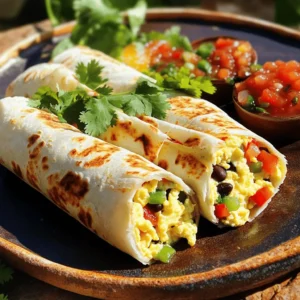
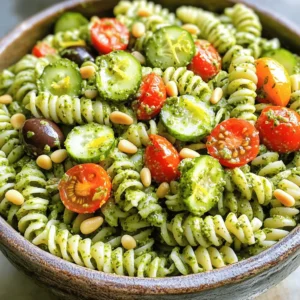
![- 1 lb chicken breast, cut into bite-sized pieces - 1 cup buttermilk - 1 cup all-purpose flour - 1 cup cornmeal - 1 teaspoon paprika - 1 teaspoon garlic powder - 1 teaspoon onion powder - 1 teaspoon chili powder - Salt and pepper to taste - Vegetable oil for frying You need fresh chicken and buttermilk for the best flavor. The buttermilk helps tenderize the chicken, making it juicy. Next, mix flour and cornmeal for the coating. The cornmeal adds a nice crunch. You’ll also want spices like paprika and garlic powder to bring out great flavors. Salt and pepper are key, too. - 8 small corn tortillas - 1 cup shredded lettuce - 1 cup diced tomatoes - 1/2 cup crumbled queso fresco or feta cheese - 1 avocado, sliced - 1/4 cup fresh cilantro, chopped - Lime wedges for serving Now, let’s talk about toppings. Fresh veggies like lettuce and tomatoes add crunch and color. Cheese, like queso fresco or feta, gives a creamy touch. Avocado slices bring richness, while lime adds zing. These fresh toppings balance the crispy chicken and make your tacos pop. You can find the full recipe [here]. Marinating makes the chicken juicy and tasty. It helps the chicken soak up flavors. I recommend marinating for at least 30 minutes. For the best taste, let it sit overnight in the fridge. This ensures a deep, rich flavor. In a bowl, mix flour, cornmeal, paprika, garlic powder, onion powder, chili powder, salt, and pepper. This mix gives the chicken a nice crunch. When you coat the chicken, dredge each piece well. Make sure it’s fully covered. Shake off any extra flour to avoid clumps. Heat oil in a large skillet until it shimmers. This means it’s hot enough for frying. Aim for medium-high heat. Fry the chicken pieces in batches. This keeps them crispy. Each piece should cook for about 4 to 5 minutes per side. They should turn golden brown. After frying, place them on a plate lined with paper towels to soak up any extra oil. Toasting the tortillas brings out their flavor. In a separate pan, toast each corn tortilla for about 30 seconds on both sides. This makes them warm and soft. To keep them warm, stack the tortillas and cover them with a clean kitchen towel. Now for the fun part! Take a warm tortilla and add a few pieces of crispy chicken. Then, top it with shredded lettuce, diced tomatoes, and avocado slices. Sprinkle some queso fresco and fresh cilantro on top. For a great touch, squeeze fresh lime juice over the tacos before serving. This adds a zesty kick. For more details, check out the Full Recipe. To get that perfect crunch, fresh oil is key. Old oil can make your chicken soggy. Fresh oil keeps each bite crisp. When you heat the oil, it should shimmer. This means it's hot enough for frying. Adding cornmeal to your coating helps too. It gives a nice texture and extra crunch. Mix it well with your flour and spices. This mix makes every piece of chicken extra crispy. Pair your tacos with sides like rice or beans. These add flavor and make a complete meal. Fresh guacamole or a simple salad can also work well. They balance the richness of the tacos. For drinks, try a cold beer or a fruity soda. A zesty margarita can be great too. These drinks make your meal even more enjoyable. Don't overcrowd the pan when frying. If you add too many pieces, the oil cools. This leads to less crispy chicken. Fry in small batches for the best results. Check the oil temperature often. If it's too low, your chicken absorbs too much oil. If it's too high, the outside burns before the inside cooks. A good range is between 350°F to 375°F for frying. {{image_2}} You can make your tacos spicy by adding jalapeños. Slice fresh jalapeños and add them on top of the chicken. You can also mix chopped jalapeños into the marinade for extra heat. This adds a nice kick. For seasoning, try adding cayenne pepper or chipotle powder. These spices will give your chicken a smoky flavor. Mix these spices into the flour coating before dredging the chicken. This simple change will elevate your tacos. If you want a healthier option, consider baking instead of frying. To bake, preheat your oven to 400°F. Place the coated chicken on a baking sheet and spray with cooking oil. Bake for about 20–25 minutes, flipping halfway through. This method cuts down on oil and calories. You can also use whole wheat tortillas. They add fiber and nutrients compared to regular corn tortillas. Whole wheat wraps hold up well with fillings and still taste great. You can create tasty vegetarian tacos by substituting chicken with cauliflower. Cut cauliflower into bite-sized pieces. Coat them in buttermilk and your flour mixture just like you would with chicken. Bake or fry until crispy. For a vegan option, use tofu. Press the tofu to remove excess moisture. Cut it into cubes and marinate in buttermilk, or use a plant-based alternative. Coat the tofu in your flour mix and fry or bake until golden. These options are delicious and fun to try. For the full recipe, check out the Crispy Chicken Tacos. You can store leftover tacos in the fridge. First, separate the chicken from the tortillas and toppings. This keeps everything fresh. Place the chicken in an airtight container. Wrap the tortillas in foil or plastic wrap. Store the toppings in separate containers. Your chicken stays good for about 3 days. When it’s time to reheat, avoid the microwave. This can make the chicken soggy. Instead, use the oven or a skillet. Preheat the oven to 350°F (175°C). Place the chicken on a baking sheet and heat for about 10 minutes. For tortillas, wrap them in foil and warm for 5 minutes. This keeps them soft and tasty. If you want to save tacos for later, freezing is a great option. Start by cooling the cooked chicken completely. Place it in a freezer-safe bag. Remove as much air as possible. You can freeze the chicken for up to 3 months. For the tortillas, you can freeze them, too. Place wax paper between each tortilla to prevent sticking. When you’re ready to eat, move the chicken to the fridge overnight. To reheat, preheat the oven to 375°F (190°C). Bake the chicken for 15-20 minutes. For the tortillas, wrap them in foil and place them in the oven for 5 minutes. This keeps the chicken crispy and the tortillas warm. Enjoy your crispy chicken tacos later with the full recipe! To make crispy chicken, start with good techniques and the right ingredients. - Marinate the Chicken: Soak chicken pieces in buttermilk. This step adds moisture and flavor. - Coating Mixture: Combine flour, cornmeal, and spices like paprika, garlic powder, and chili powder. This mix gives crunch and taste. - Hot Oil: Use enough vegetable oil and heat it well. The right temperature is key for crispiness. - Fry in Batches: Do not overcrowd the pan. Frying in small batches helps each piece cook evenly. By following these steps, you will achieve crispy and flavorful chicken every time. Yes, you can prepare crispy chicken tacos in advance. Here are some tips for preparation and storage: - Cook the Chicken: Fry the chicken pieces and let them cool. You can store them in the fridge for up to two days. - Tortillas: Warm the tortillas just before serving. They taste best fresh. - Store Separately: Keep the chicken, tortillas, and toppings in separate containers. This keeps everything fresh and prevents sogginess. When you're ready to eat, just assemble your tacos for a quick meal. Toppings make your crispy chicken tacos even better. Here are some popular and flavorful options: - Shredded Lettuce: Adds crunch and freshness. - Diced Tomatoes: Offers a juicy, sweet contrast. - Queso Fresco: This cheese adds creaminess and salt. - Avocado Slices: They bring a rich, buttery flavor. - Fresh Cilantro: It adds a bright, herbal note. - Lime Wedges: Squeeze lime juice over the tacos for a zesty kick. Mix and match these toppings to suit your taste. Enjoy your delicious tacos! For the Full Recipe, check out the earlier sections. You learned how to make crispy chicken tacos with the right ingredients and steps. Marinating your chicken enhances flavor. Proper techniques in coating and frying keep the chicken crispy. Remember to layer fresh toppings for balance. Avoid common mistakes for the best outcome. You can also explore variations, such as vegetarian options. Incorporate these tips for tasty tacos. Enjoy making them your way!](https://cheftaling.com/wp-content/uploads/2025/07/bfd5752c-be45-41f1-8df5-3aaba4e77cdd-300x300.webp)
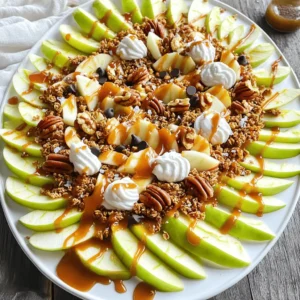
![To make tasty Buffalo Chicken Lettuce Wraps, you need a few key ingredients: - 1 pound boneless, skinless chicken breasts, cooked and shredded - 1/2 cup buffalo sauce (adjust to taste) - 1 tablespoon olive oil - 1 cup celery, finely chopped - 1/2 cup carrots, grated - 1 head of Romaine or Butter lettuce, leaves separated - Fresh chives, chopped, for garnish - Salt and pepper to taste These ingredients come together to create a blend of flavors and textures. The chicken gives protein and heartiness, while the buffalo sauce adds a spicy kick. The crunchy veggies bring freshness and balance. You can customize your wraps with these optional ingredients: - 1/2 cup blue cheese or ranch dressing - Avocado slices for creaminess - Sliced green onions for a mild onion flavor - Diced tomatoes for added juiciness These additions let you change up the taste. If you love creamy dressings, add some blue cheese or ranch. Avocado can make the wraps richer and more filling. To enhance the flavor of your Buffalo Chicken Lettuce Wraps, consider these key seasonings: - Garlic powder - Onion powder - Smoked paprika These seasonings add depth to your chicken. Garlic and onion powder give a savory note, while smoked paprika brings a hint of smokiness. Feel free to adjust the amounts based on your taste. For a full recipe, check out the [Full Recipe]. Start by heating olive oil in a medium saucepan over medium heat. Then, add the cooked and shredded chicken to the pan. Pour in the buffalo sauce and stir well. You want each piece of chicken to be coated well. Cook this mixture for about 5 to 7 minutes. Stir it occasionally until it heats through. If you like it spicier, add more buffalo sauce now. This step gives the filling its bold flavor. Next, grab a head of Romaine or Butter lettuce. Carefully separate the leaves. Take one leaf and place it on a plate. Spoon a generous amount of the buffalo chicken mixture into the center of the leaf. Then, add a mix of chopped celery and grated carrots on top of the chicken. This adds crunch and freshness. If you enjoy dressing, drizzle some blue cheese or ranch over everything. To wrap it up, fold the sides of the lettuce leaf over the filling. You can use a toothpick to hold it together if needed. For a nice finish, sprinkle some chopped chives on top. This adds color and flavor. Serve these wraps right away. They taste best when fresh! For the full recipe, check out the details above. Enjoy your tasty buffalo chicken lettuce wraps! To get the best flavor in your Buffalo chicken, use high-quality buffalo sauce. I love making my own sauce for a fresh taste. Mix hot sauce with melted butter for a balanced kick. Taste it and adjust to find your perfect heat level. Adding a splash of vinegar can also brighten the flavor. For easy shredding, I suggest cooking chicken in a slow cooker. Cook it on low for four to six hours. This makes the chicken tender and juicy. After cooking, use two forks to shred the chicken in the pot. You can also boil the chicken for about 15-20 minutes and shred it with the same method. You can easily make these wraps healthier. Use skinless chicken breasts for less fat. Swap buffalo sauce for a lighter hot sauce if you want fewer calories. Add more veggies like bell peppers or cucumbers for extra crunch and nutrition. Using Greek yogurt instead of blue cheese dressing keeps the flavor while cutting down on fat. {{image_2}} If you love heat, add more buffalo sauce to your chicken. You can also mix in minced jalapeños or a pinch of cayenne pepper. This will give your wraps a fiery kick. Try using a spicy ranch dressing instead of blue cheese for a twist. You can even sprinkle some crushed red pepper flakes on top for extra spice. For a meatless option, swap the chicken for jackfruit or chickpeas. Shred the jackfruit and cook it with buffalo sauce the same way as chicken. If you use chickpeas, mash them slightly and mix with buffalo sauce. Both options will still give you that great buffalo taste. Toss in some diced bell peppers for added crunch and flavor. You can change the flavor of your wraps with different sauces. Try using teriyaki sauce for a sweet twist. BBQ sauce gives a smoky flavor that pairs well with chicken. For a tangy taste, go for a zesty lemon garlic sauce. Each sauce brings out a new flavor and keeps your wraps exciting. For the complete recipe, check out the Full Recipe. To store your Buffalo chicken lettuce wraps, let them cool first. Place the chicken mix in an airtight container. Keep the lettuce leaves separate to stay crisp. Store them in the fridge for up to three days. This way, you can enjoy them again later without losing that fresh crunch. When you're ready to eat the leftovers, reheat the chicken mix. Use a microwave or stove. If using a microwave, heat in short bursts. Stir in between to heat evenly. On the stove, warm it gently over low heat. Avoid overheating, as this can dry out the chicken. Keep the lettuce fresh and cold until you are ready to assemble. You can freeze the buffalo chicken mix if you want to save it for later. Place it in a freezer-safe container or bag. Make sure to remove as much air as possible. Label the container with the date. It can last up to three months in the freezer. When ready to eat, thaw it overnight in the fridge before reheating. Remember, only freeze the chicken mix, not the lettuce. Yes, you can use other types of lettuce. Butter lettuce is soft and easy to fold. Iceberg lettuce is crisp and gives a nice crunch. Both options work well. You can even use cabbage leaves for a twist. Each type brings a unique flavor and texture. Try different ones to find your favorite! You can prepare the chicken filling ahead of time. Cook and shred the chicken, then mix it with buffalo sauce. Store this mix in the fridge. When ready to serve, just warm it up. Prepare the veggie mix in advance too. Keep everything in separate containers. Assemble the wraps just before serving for the best taste. These wraps pair well with many sides. Here are a few ideas: - Veggie sticks with dip - A fresh garden salad - Sweet potato fries - Quinoa salad - Fruit salad Each side adds variety and complements the flavors of the wraps. Enjoy mixing and matching! Buffalo chicken lettuce wraps are fun and easy to make. We covered key ingredients, flavors, and techniques. You can customize the recipe with your favorite protein or spices. Whether you prefer it spicy, vegetarian, or with different sauces, there’s a version for everyone. Remember to store leftovers properly and savor them later. Experiment and enjoy these tasty wraps for a healthier meal option. Now, get cooking and make your meal a hit!](https://cheftaling.com/wp-content/uploads/2025/07/e0f18e9b-00c7-436f-8397-487a8606612f-300x300.webp)
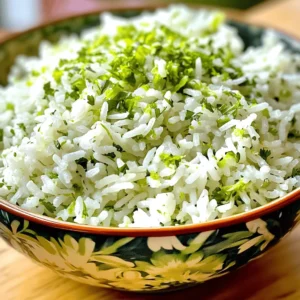
![- 200g rice noodles - 1 cup shredded carrots - 1 cup red bell pepper, thinly sliced - 1 cup cucumber, julienned - 1/2 cup red cabbage, shredded - 1/4 cup fresh cilantro, chopped - 1/4 cup green onions, sliced - 1/4 cup roasted peanuts, crushed - 3 tablespoons lime juice - 2 tablespoons sesame oil - 1 tablespoon fish sauce (or soy sauce for a vegetarian option) - 1 tablespoon honey or maple syrup - 1-2 teaspoons chili garlic sauce - Salt to taste Using fresh vegetables is key to great taste. I always choose bright, crisp produce. Fresh carrots and cucumbers add crunch. Look for vibrant bell peppers and cabbage for color. For noodles, pick high-quality rice noodles. They should cook up soft and chewy. I like using brands that have no preservatives. This makes sure your salad tastes fresh and clean. For the dressing, fresh lime juice brightens flavors. Sesame oil adds depth. Adjust the chili sauce to suit your spice level. Use good quality fish sauce or soy sauce for a rich umami flavor. This recipe is all about balance and freshness, so treat each ingredient with care. If you want the full recipe, check out the [Full Recipe]. Start by boiling a large pot of water. Add the rice noodles and cook them for 4-6 minutes. Check the package for exact times. When they are done, drain the noodles. Rinse them under cold water. This stops the cooking process and cools them down. While the noodles cook, chop your vegetables. Use a sharp knife for thin slices. Cut the carrots, bell pepper, cucumber, and red cabbage. Keep the cuts uniform for a nice look. For a pretty salad, arrange them in colorful layers. In a small bowl, combine the lime juice, sesame oil, fish sauce, honey, and chili garlic sauce. Whisk the ingredients until they blend well. If you like it spicier, add more chili sauce. Taste it and adjust the salt as needed. In a large bowl, mix the cooled noodles with the prepared vegetables. Pour the dressing over this mix. Toss everything gently to coat. Make sure the dressing reaches all parts of the salad. Sprinkle the crushed peanuts on top for a crunchy finish. You can also add other toppings like sesame seeds or extra herbs. Let the salad rest for about 10 minutes before serving. This helps the flavors meld together. You can find the full recipe in the article to guide you through these steps. To make your dressing just right, start with lime juice. Adjust it based on your taste. If you like it sweeter, add more honey or maple syrup. For a saltier flavor, add a bit more fish sauce or soy sauce. Spice is key in this salad. If you want more heat, add extra chili garlic sauce. You can start with one teaspoon and taste. Add more until it suits your spice level. Everyone's taste is different, so feel free to play around! This salad shines with fresh flavors. For a great meal, serve it with grilled chicken or shrimp. A cool drink pairs well too. Try icy lemonade or coconut water for a refreshing touch. Serve the salad cold or at room temperature. This gives the flavors time to meld. If you make it ahead of time, keep it in the fridge until serving. Plating makes a big difference. Use a large bowl or a stylish platter. Spread the salad evenly for a nice look. Garnish with crushed peanuts on top for crunch. Fresh cilantro adds a pop of color. You can also add lime wedges on the side. It looks pretty and gives a fresh squeeze when served. For the full recipe, check out the details above. {{image_2}} You can swap out vegetables to create new flavors in your Spicy Thai Noodle Salad. Try using snap peas for a sweet crunch. You could also add bean sprouts for a fresh bite. If you want heat, consider sliced jalapeños. For a vegan option, use mushrooms instead of chicken. To make it gluten-free, choose rice noodles made from 100% rice. You can also substitute soy sauce with tamari. This way, everyone can enjoy the salad. Adding protein can make your salad more filling. You can use grilled chicken for a hearty option. Shrimp is another great choice and adds a nice touch. If you prefer plant-based protein, tofu works well too. Just cube it and sauté for extra flavor. If you want a nutty taste, consider adding more nuts or seeds. Toasted sesame seeds pair nicely. Crushed cashews also give a tasty crunch. You can change the dressing to suit your taste. Try a peanut dressing by blending peanut butter with lime juice and a bit of water. This gives a creamy texture and rich flavor. If you want a creamy option, use Greek yogurt mixed with lime juice. It adds a nice tang and creaminess. You can also mix in a bit of sriracha for an extra kick. For the full recipe, see the earlier section. To keep your Spicy Thai Noodle Salad fresh, use airtight containers. This helps keep out air and moisture. Store the salad in the refrigerator right after serving. If you have extra dressing, store it separately. This prevents the noodles from becoming soggy. When stored properly, the salad lasts about 3 days in the fridge. After that, the freshness fades. Signs of spoilage include a sour smell or a change in color. If you notice these signs, it’s best to toss it out. For leftovers, you don’t need to reheat the salad. Serve it cold or at room temperature. If it feels dry, add a bit of the dressing to refresh it. This keeps the flavor and texture just right. Enjoy your meal! Making Spicy Thai Noodle Salad is quick and easy. You need about 15 minutes to prep and 30 minutes total. This includes cooking the noodles and mixing the salad. If you want a vegetarian option, use soy sauce instead of fish sauce. You can also try coconut aminos for a lighter taste. Both work well and keep the flavor balanced. Yes, you can prepare the salad a few hours before serving. Just store the dressing separately. Mix it in right before you serve to keep everything fresh and crunchy. The spice level depends on how much chili garlic sauce you use. Start with one teaspoon for a mild kick. You can add more if you want it spicier. Remember, you can always add heat but can’t take it away! Yes, this salad is healthy! It has fresh veggies like carrots, bell peppers, and cucumbers. The rice noodles provide energy, and the peanuts add protein. It’s a tasty way to get your nutrients in a colorful dish. For the full recipe, check out the earlier section. This blog post explored the vibrant world of Spicy Thai Noodle Salad. You learned the main ingredients, cooking and prep steps, and tips for the best flavor. We discussed ideas for variations and how to store leftovers. Spicy Thai Noodle Salad is fun to make and enjoy. With fresh ingredients and custom flavors, it suits everyone. Use these tips to create your perfect salad and impress your guests. Happy cooking!](https://cheftaling.com/wp-content/uploads/2025/07/02631f9f-3fc8-472b-b3d7-e780008cd8c3-300x300.webp)
![To make a tasty açaí bowl, you need simple ingredients. Here is what you will need: - 2 packets frozen açaí puree (about 100g each) - 1 ripe banana - 1/2 cup almond milk (or any milk of choice) These three items create the base of your bowl. The açaí puree gives a deep, fruity flavor. The banana adds creaminess and natural sweetness. Almond milk helps blend everything smoothly. You can add sweeteners for extra flavor. Here are some options: - 1 tablespoon honey or agave syrup (optional) If you like your bowl sweeter, add honey or agave syrup. These sweeteners blend well without overpowering the açaí flavor. Toppings make your açaí bowl fun and colorful. Here are some great choices: - 1/2 cup granola - 1/2 cup mixed berries (strawberries, blueberries, raspberries) - 1 tablespoon chia seeds - 1 tablespoon coconut flakes - Mint leaves for garnish Granola adds a nice crunch. Mixed berries bring bright colors and more flavor. Chia seeds and coconut flakes add texture and nutrients. Finish with a mint leaf for a fresh touch. You can find the full recipe to create your perfect açaí bowl. Enjoy customizing and exploring flavors! To start, gather your ingredients. You need two packets of frozen açaí puree, a ripe banana, and half a cup of almond milk. If you like, add a tablespoon of honey or agave syrup for sweetness. 1. Place the frozen açaí puree, banana, almond milk, and honey in a blender. 2. Blend until smooth and creamy. If the mix is too thick, add more almond milk. 3. Once blended, pour the mixture into a bowl. This is your rich açaí base. Now comes the fun part—layering your toppings! 1. Start with half a cup of granola. Place it on one side of the bowl. 2. Next, take half a cup of mixed berries. Arrange strawberries, blueberries, and raspberries beside the granola. This adds color and freshness. 3. Sprinkle one tablespoon of chia seeds and coconut flakes over the top. This creates a nice contrast with the vibrant fruits. 4. Finally, add a sprig of mint leaves for a pop of green. It makes your bowl look beautiful. Your açaí bowl is ready to serve! 1. Grab a spoon and dig in right away. 2. Enjoy the mix of flavors and textures. The crunch of granola pairs well with soft fruit. 3. Feel free to share your bowl with friends. They will love it! For more details, check the Full Recipe. This simple and delicious açaí bowl will surely brighten your day! To get that smooth and creamy texture, use frozen açaí puree. Add a ripe banana and some almond milk to your blender. Blend until it is smooth. If it’s too thick, add a bit more milk. If it’s too runny, add more frozen açaí. You want it thick enough to hold your toppings well. Start with granola as your base. This adds crunch and flavor. Next, place your mixed berries on the side. Try to arrange them by color for a pretty look. Then, sprinkle chia seeds and coconut flakes on top. This layering makes it fun to eat and looks great in the bowl. You can prepare your açaí base the night before. Just blend the açaí, banana, and milk, then store in the fridge. In the morning, layer your toppings before serving. This saves time and keeps your breakfast fresh. Remember, you can switch up the toppings each day for variety. Check out the Full Recipe to explore more ideas! {{image_2}} You can add a tropical twist to your açaí bowl. Start with your base of açaí, banana, and almond milk. Then, mix in fresh mango and pineapple. They add a sweet, juicy flavor that brightens the bowl. Just chop the fruits and blend them in. You can also top with extra mango and pineapple for more texture. This bowl feels like a vacation in every bite! If you have nut allergies, don’t worry! You can still enjoy açaí bowls. Substitute almond milk with oat milk or coconut milk. Use nut-free granola or leave it out. You can sprinkle sunflower seeds or pumpkin seeds on top instead. These seeds give a nice crunch and add nutrition without nuts. Always check labels to ensure no hidden nuts in your ingredients. Making a vegan açaí bowl is easy and delicious! Stick to plant-based ingredients. Use agave syrup instead of honey for sweetness. Choose granola that is certified vegan. You can also add plant-based yogurt on top for creaminess. Don't forget fresh fruits like bananas and berries. They enhance the flavor and make the bowl colorful. You’ll love how creamy and satisfying a vegan açaí bowl can be! If you have leftover açaí bowl, store it in the fridge. Use an airtight container to keep it fresh. The bowl stays good for about one day. If you wait too long, the toppings may get soggy. To enjoy it again, just stir it up before eating. You can freeze açaí puree for later use. This is a great way to save time. Pour the puree into ice cube trays. Once frozen, pop out the cubes and place them in a ziplock bag. This method keeps the puree fresh for up to three months. When you need it, just blend a few cubes with your favorite fruits and milk. For best results, choose glass or BPA-free plastic containers. These keep your açaí bowl fresh longer. Glass containers do not absorb smells. Plastic ones are lightweight and easy to store. Ensure your container is tight-sealing to block air. This helps maintain the delicious taste and texture of your açaí bowl. Açaí is a small, dark purple berry from Brazil. It grows on açaí palm trees in the Amazon rainforest. People love açaí for its taste and health benefits. It is rich in antioxidants, fiber, and heart-healthy fats. This berry helps with energy and boosts your immune system. You will find açaí in smoothie bowls, drinks, and desserts. The vibrant color and unique flavor make it fun to eat. Açaí bowls are popular because they are tasty, healthy, and customizable. You can use fresh açaí, but it is not common. Fresh açaí spoils quickly and is often hard to find. Most recipes use frozen açaí puree, as it is easier to get. Frozen puree keeps the berry's nutrients and flavor. If you find fresh açaí, you can blend it with other fruits. Just remember to add a sweetener, as fresh açaí can taste bitter. For this recipe, I recommend sticking with frozen açaí for the best results. Check the [Full Recipe] for details. You can easily adjust this recipe for different diets. Here are some ideas: - Dairy-Free: Use almond, coconut, or oat milk instead of regular milk. - Sweeteners: If you prefer no added sugar, skip the honey or agave. Use ripe bananas for natural sweetness. - Nut-Free: Swap granola with seeds or puffed rice to avoid nuts. - Vegan: Ensure your sweeteners and granola are vegan-friendly. Feel free to get creative and make this bowl fit your needs! Making a homemade açaí bowl is easy and fun. We covered essential ingredients and optional flavors. Then, I shared step-by-step instructions for preparing the base and layering toppings. You learned tips for perfect consistency and storage options. Finally, we explored fun variations, including tropical and vegan-friendly bowls. Now, you can enjoy a delicious açaí bowl that suits your taste. Customize it and make it your own. Happy blending!](https://cheftaling.com/wp-content/uploads/2025/07/8709a9dc-08d9-4980-b4c7-ef28882520a9-300x300.webp)
![- 1.5 lbs boneless, skinless chicken breasts, sliced into thin strips - 1 red bell pepper, sliced - 1 green bell pepper, sliced - 1 yellow onion, sliced For the Chicken Fajita Sheet Pan Dinner, chicken is the star. I love using boneless, skinless chicken breasts because they cook quickly. You can slice them into thin strips for even cooking. Fresh bell peppers add color and crunch. I use red and green to balance flavors. A yellow onion brings sweetness that pairs well with chicken. - 2 tablespoons olive oil - 2 teaspoons chili powder - 1 teaspoon cumin - 1 teaspoon garlic powder - 1 teaspoon onion powder - 1/2 teaspoon smoked paprika - Salt and pepper to taste Seasoning is key in this dish. Olive oil helps the spices stick to the chicken and veggies. Chili powder adds a warm kick. Cumin gives a nice, earthy flavor. Garlic and onion powders enhance the taste. Smoked paprika adds a subtle smokiness. Don’t forget to salt and pepper to your liking. - Tortillas, for serving - Optional toppings: sour cream, guacamole, chopped cilantro, lime wedges Serving the fajitas in warm tortillas makes each bite special. You can choose flour or corn tortillas based on your taste. For extra flavor, add toppings like sour cream or guacamole. Fresh cilantro and lime juice brighten the dish, making it more delicious. For the full recipe, check out the Sizzling Chicken Fajita Sheet Pan Dinner. 1. Preheat the oven: Start by setting your oven to 425°F (220°C). This high heat helps to cook the chicken and veggies quickly while adding a nice char to them. 2. Prepare the chicken and vegetables: Take 1.5 lbs of boneless, skinless chicken breasts and slice them into thin strips. Next, slice one red bell pepper, one green bell pepper, and one yellow onion. Make sure all pieces are roughly the same size for even cooking. 1. Season and mix ingredients: In a large bowl, combine the chicken strips, sliced bell peppers, and onion. Drizzle 2 tablespoons of olive oil over the mixture. Then, sprinkle 2 teaspoons of chili powder, 1 teaspoon of cumin, 1 teaspoon of garlic powder, 1 teaspoon of onion powder, 1/2 teaspoon of smoked paprika, and salt and pepper to taste. Toss everything together until the chicken and veggies are well coated with the spices and oil. 2. Spread mixture on baking sheet: Line a large baking sheet with parchment paper for easy cleanup. Spread the seasoned chicken and veggie mixture evenly on the baking sheet. Avoid overcrowding the pan; this allows everything to cook evenly. 3. Baking time and temperature: Place the baking sheet in the preheated oven. Bake for 20-25 minutes. The chicken should reach an internal temperature of 165°F (75°C), and the veggies should be tender and slightly charred. Once done, take it out, and let it rest for a few minutes before serving. You can enjoy this dish in warm tortillas with your choice of toppings. For the full recipe, check out the [Full Recipe]. To ensure perfectly cooked chicken, always slice your chicken breasts into thin strips. This helps them cook evenly. Use a meat thermometer to check the chicken's internal temperature. It should reach 165°F (75°C). This step keeps your meal safe and tasty. Avoid overcrowding the pan. If you place too much food in one area, it can steam instead of roast. This means your veggies won’t get those nice char marks. Spread your chicken and veggies evenly on the baking sheet for the best results. When it comes to tortillas, soft flour tortillas are a great choice. They wrap well around the filling. Corn tortillas are another option if you prefer a gluten-free meal. Both types hold up well with toppings. For toppings, get creative! Sour cream adds a creamy touch. Guacamole brings a fresh taste. Chopped cilantro adds color and flavor. Lime wedges give a zesty kick. Mix and match to find your favorite combo. These choices will make your Chicken Fajita Sheet Pan Dinner even better. For the full recipe, check the earlier section! {{image_2}} You can change up the chicken in this recipe. Try using turkey or shrimp. Both options cook well and add a new flavor. If you want to swap veggies, bell peppers are great, but you can also use zucchini, mushrooms, or corn. Each will give a different taste and texture to your meal. For a spicy kick, add jalapeños or a pinch of cayenne pepper. You can also use chipotle powder for a smoky heat. If you're looking for a vegetarian option, replace chicken with black beans or chickpeas. This keeps the dish filling and tasty. Adding extra spices, like smoked paprika or cumin, can enhance the flavor even more. You can find the Full Recipe to see how easy it is to make these changes! To keep your Chicken Fajita Sheet Pan Dinner fresh, store leftovers in an airtight container. This helps prevent moisture loss and keeps flavors intact. Place the container in the fridge. It will stay good for about three to four days. If you want to keep it longer, consider freezing it. Use freezer-safe bags to save space. Just make sure to remove as much air as possible before sealing. When you're ready to enjoy your leftovers, you want to keep them tasty. The best way to reheat chicken fajitas is in the oven. Preheat your oven to 350°F (175°C). Spread the chicken and veggies on a baking sheet. Heat for about 10-15 minutes or until warm. This method helps keep the chicken juicy and the veggies crisp. If you're in a hurry, you can use the microwave. Place the fajitas in a microwave-safe dish and cover it with a damp paper towel. Heat in short bursts of 30 seconds until warm, stirring in between. This helps keep moisture in, so your meal does not dry out. How long to cook chicken fajitas in the oven? You should cook chicken fajitas in the oven for 20 to 25 minutes. The chicken should reach 165°F. Make sure the vegetables are tender and slightly charred. Can I make this recipe ahead of time? Yes, you can make this recipe ahead. Prep the chicken and veggies and store them in the fridge. Just bake them when you're ready to eat. What to serve with Chicken Fajita Sheet Pan Dinner? You can serve your fajitas with warm tortillas. Add toppings like sour cream, guacamole, or fresh cilantro. These add flavor and fun. Is it possible to freeze leftovers? Yes, you can freeze leftovers. Just let them cool, then place them in airtight containers. Freeze for up to three months. Can I use frozen vegetables? You can use frozen vegetables, but they may cook differently. They might be a bit softer. Thaw them first, then mix with the chicken and spices for best results. For the full recipe, check here. This blog post covered how to make a Chicken Fajita Sheet Pan Dinner. We discussed key ingredients, preparation steps, and cooking methods. I shared helpful tips for perfect cooking and serving suggestions. You learned about ingredient variations and how to store leftovers. Enjoy this easy recipe for a tasty meal. Make it your own and have fun!](https://cheftaling.com/wp-content/uploads/2025/07/941daa2f-45cd-4959-8d84-09131ed61d58-300x300.webp)
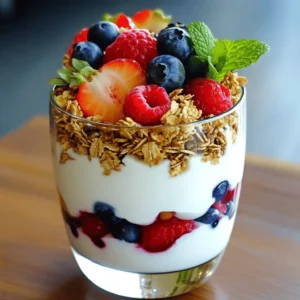

![- 4 medium sweet potatoes - 1 lb ground turkey (or beef) - 1 can black beans, rinsed and drained - 1 cup corn (frozen or fresh) - 1 packet taco seasoning (or homemade mix) - 1 cup diced tomatoes (canned or fresh) - 1 cup shredded cheese (cheddar or Mexican blend) - 1 avocado, diced - ½ cup Greek yogurt or sour cream - 1 lime, juiced - Fresh cilantro, chopped - Salt and pepper To make taco stuffed sweet potatoes, gather these ingredients. Sweet potatoes are sweet and healthy. They provide a great base for your meal. Ground turkey or beef adds protein and flavor. Black beans pack in fiber, making this dish filling. Corn adds a sweet crunch. Taco seasoning brings in classic Mexican flavors. Diced tomatoes keep everything juicy. Shredded cheese adds a creamy touch when melted. Diced avocado gives a fresh taste. Greek yogurt or sour cream adds coolness to each bite. Lime juice brightens the dish. Fresh cilantro adds a touch of freshness. Don’t forget salt and pepper to enhance the flavors. - Calories per serving: Approximately 400-500 - Macronutrient breakdown: - Protein: 25-30g - Carbohydrates: 60-70g - Fats: 10-15g This meal can be a healthy option. It is packed with nutrients and flavor. You can enjoy a satisfying dish without guilt. For the full recipe, check the section above on Taco Stuffed Sweet Potatoes. To start, wash the sweet potatoes well under cold water. Scrub them to remove any dirt. After washing, pierce each sweet potato a few times with a fork. This step helps steam escape while baking. Next, preheat your oven to 400°F (200°C). This temperature ensures the sweet potatoes cook evenly and become tender. While the sweet potatoes bake, it’s time to cook the taco filling. Heat a large skillet over medium heat. Add 1 pound of ground turkey or beef to the skillet. Cook until it’s browned, breaking it apart with a spatula. Season with salt, pepper, and a packet of taco seasoning. Once browned, stir in 1 can of rinsed black beans, 1 cup of corn, and 1 cup of diced tomatoes. Allow the mixture to simmer for about 5 minutes. This lets the flavors blend together nicely. Taste it and adjust the seasoning if needed. After about 45-50 minutes, check your sweet potatoes. They should be soft and tender. Remove them from the oven and let them cool slightly. Slice each sweet potato open lengthwise to create a pocket for the filling. Now, fill each potato with the taco mixture. Pack it in well so each bite is full of flavor. For toppings, sprinkle shredded cheese on top. Add diced avocado, a dollop of Greek yogurt or sour cream, and a squeeze of fresh lime juice. Finish with a sprinkle of chopped cilantro. To melt the cheese, return the stuffed sweet potatoes to the oven for 5-7 minutes. You want the cheese to be nice and bubbly. Once done, take them out, let them cool a bit, and serve warm. Enjoy this easy and flavorful dish! For the full recipe, refer to the recipe section. When selecting sweet potatoes, look for firm ones. Avoid any with soft spots or blemishes. Size matters too. Medium sweet potatoes work best for this recipe. They are easier to scoop and fill. If they are too large, the filling may not fit well. Freshness is key. Choose sweet potatoes that feel heavy for their size. This means they are full of moisture. To make the taco filling pop, adjust the spices. If you like heat, add more chili powder or cayenne. For a milder flavor, use less. You can also enhance the taste with fresh herbs like cilantro. If you have leftovers, don’t toss them! Use them in this filling. Leftover chicken or beans fit perfectly in the mix. Just ensure they are heated through before filling the sweet potatoes. Pair your taco stuffed sweet potatoes with a fresh salad. A simple green salad with lime dressing works great. You can also serve them with tortilla chips and salsa for crunch. This dish is perfect for casual gatherings or family dinners. It's easy to make and sure to please everyone. Enjoying these stuffed sweet potatoes on taco night adds a fun twist! {{image_2}} You can easily make Taco Stuffed Sweet Potatoes vegetarian or vegan. For meat substitutes, try using lentils or quinoa. These options offer great texture and flavor. You can also use plant-based ground meat. For toppings, use dairy-free cheese or avocado instead of sour cream. You can add fresh veggies like diced bell peppers or jalapeños for a crunchy bite. Make your dish unique with different flavor profiles. For a Mexican-style twist, add fresh lime juice and cilantro. You can also use spicy salsa for a kick. If you want to explore global flavors, think outside the box. Add curry powder for an Indian-inspired taste. Or, try using tahini and chickpeas for a Middle Eastern flair. You can easily swap ingredients to suit your taste. For cheese, try a vegan option like cashew cheese. This keeps it creamy without dairy. When it comes to beans and grains, feel free to mix it up. Black beans work well, but you can also use pinto beans or kidney beans. Brown rice or farro can add extra fiber and nutrients. For the full recipe, check out the detailed instructions provided earlier. To keep your taco stuffed sweet potatoes fresh, store them in an airtight container. Make sure they cool down before sealing. If you leave them out too long, they will spoil. Place the container in the fridge. The cool air will help the flavors stay fresh. You can freeze the stuffed sweet potatoes for later. Wrap each one in plastic wrap. Then, put them in a freezer-safe bag. This protects them from freezer burn. When you want to eat them, take them out and let them thaw in the fridge overnight. To reheat, you can use the oven or a microwave. For the oven, preheat it to 350°F (175°C). Place the sweet potatoes on a baking sheet. Heat for about 20 minutes until warm. If using a microwave, heat in short bursts, checking often. Leftovers in the fridge last about 3 to 5 days. After that, the taste and texture may change. Always check for any signs of spoilage. If they look or smell off, it’s best to throw them away. Yes, you can make this recipe ahead of time. Here are some tips: - Bake the sweet potatoes a day in advance. - Prepare the taco filling and store it in the fridge. - When ready to serve, reheat the filling and stuff it into warm sweet potatoes. - Top with cheese and other toppings right before serving. You have many options for proteins. Here are some ideas: - Ground beef for a classic taste. - Ground chicken for a lighter choice. - Black beans or lentils for a vegetarian option. - Tofu crumbles for a vegan twist. Sweet potatoes are done when they are soft. Here are signs to look for: - A fork should easily pierce through the skin. - The skin may look slightly wrinkled. - The sweet potato should feel soft when squeezed gently. Absolutely! You can make it your own. Here are popular topping ideas: - Sliced jalapeños for heat. - Chopped green onions for freshness. - Salsa for added flavor. - Different cheeses like feta or pepper jack. - Fresh herbs like parsley or chives. Enjoy trying these variations and tips! For the full recipe, check out the [Full Recipe]. This blog post covered a tasty stuffed sweet potato recipe. It highlighted key ingredients, from sweet potatoes to ground turkey or beans. I shared step-by-step cooking instructions and helpful tips for perfecting the dish. We explored fun variations, storage tips, and answered common questions. Try this recipe for a healthy meal that’s easy to customize. Your next meal can be both delicious and satisfying! Enjoy the taste and nutrition this dish offers.](https://cheftaling.com/wp-content/uploads/2025/06/29b5296b-633c-4f74-86e1-7e5b57c830b2-300x300.webp)
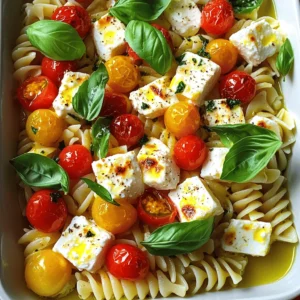
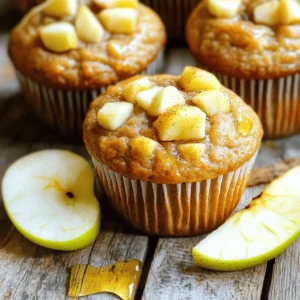
![To make crispy baked coconut shrimp, gather these simple ingredients: - 1 pound large shrimp, peeled and deveined - 1 cup shredded coconut (sweetened or unsweetened) - 1/2 cup panko breadcrumbs - 1/2 cup all-purpose flour - 2 large eggs - 1 teaspoon garlic powder - 1 teaspoon paprika - Salt and pepper, to taste - Cooking spray or olive oil for drizzling - Sweet chili sauce or homemade mango salsa, for serving Each ingredient plays a key role. The shrimp provide protein and a sweet taste. The shredded coconut adds crunch and flavor. Panko breadcrumbs help create a crispy coating. The flour works as a base, helping the egg and coconut stick. Garlic powder and paprika add depth to the flavor. Salt and pepper enhance the overall taste. Finally, the sweet chili sauce or mango salsa offers a perfect dip. These ingredients make a delicious dish that is great for any meal. You can enjoy it as an appetizer, snack, or main course. For the full recipe, visit the [Full Recipe]. - Preheat the oven to 400°F (200°C). - Line a baking sheet with parchment paper. This step makes sure the shrimp cook evenly. The parchment also helps with easy cleanup. - Set up three shallow bowls. - In the first bowl, mix flour with salt, pepper, garlic powder, and paprika. - In the second bowl, beat the eggs until blended. - In the third bowl, combine shredded coconut and panko breadcrumbs. Having your bowls ready makes the breading process quick and fun. It keeps things tidy, too. 1. Take a shrimp and dip it into the flour mixture. 2. Coat both sides well; shake off extra flour. 3. Next, dip the shrimp into the beaten eggs. 4. Let the excess egg drip off. 5. Finally, press the shrimp into the coconut and panko mix. This coating gives your shrimp a crunchy and tasty finish. Make sure to cover each shrimp fully. - Place the coated shrimp on the baking sheet in a single layer. - Lightly spray or drizzle olive oil over the shrimp for crisping. - Bake for 12-15 minutes until golden brown and cooked through. The internal temperature should reach 120°F (49°C). Keep an eye on them so they don’t overcook. These steps bring out the best flavor in your crispy baked coconut shrimp. For the full recipe, check out the earlier section. To get that nice crunch, follow these tips: - Use Panko Breadcrumbs: Panko gives a lighter, crunchier texture than regular breadcrumbs. - Coat Well: Make sure to coat the shrimp completely in the coconut mixture. - Oil It Up: Lightly spray or drizzle oil on top before baking. This helps it brown. - Bake at the Right Temp: Keep your oven at 400°F (200°C) for the best crisp. - Don’t Crowd the Pan: Leave space between shrimp on the baking sheet. This allows hot air to circulate. Adding spices or herbs can make this dish shine. Try these ideas: - Cayenne Pepper: For a spicy kick, add this to the flour mix. - Coconut Flakes: Use larger flakes for more coconut flavor and texture. - Lime Zest: Add zest to the coconut mix for a fresh twist. - Cilantro or Parsley: Chopped herbs added to the breading can brighten the taste. What to serve with crispy baked coconut shrimp? Here are some tasty ideas: - Dips: Sweet chili sauce pairs great. Mango salsa is also a hit. - Sides: Serve with rice or a fresh salad. - Drinks: Pair with a tropical drink, like coconut water or a fruity smoothie. For the full recipe, check out the [Full Recipe]. {{image_2}} If you need a gluten-free option, use almond flour instead of all-purpose flour. For breadcrumbs, try gluten-free panko. These changes keep the recipe tasty and crunchy without gluten. You can find these products in most stores. They work well in this dish and won't change the flavor much. You can spice up your coconut shrimp by changing the seasonings. Try adding cayenne pepper for heat or cumin for a warm flavor. You can also mix in some lime zest for a fresh twist. If you love herbs, try adding chopped cilantro or parsley to the coconut mixture. This adds a burst of flavor to each bite. Want to cook your shrimp faster? Use an air fryer! Preheat it to 400°F (200°C). Arrange the breaded shrimp in a single layer. Cook for about 8 to 10 minutes or until they turn golden brown. This method gives you a nice crisp without needing to bake for long. It's perfect for busy nights or quick snacks! To store leftover shrimp, place them in an airtight container. Make sure the shrimp cool down before sealing. This keeps them fresh and tasty. Store the shrimp in the fridge for up to two days. When you reheat them, do it gently to avoid rubbery shrimp. For longer storage, you can freeze the shrimp. First, let them cool completely. Then, place them in a freezer-safe bag. Remove as much air as possible before sealing. This will prevent freezer burn. You can freeze the shrimp for up to three months. When you want to eat them, thaw the shrimp in the fridge overnight. Reheat in the oven or air fryer for the best texture. Crispy baked coconut shrimp is best enjoyed fresh. However, if stored properly, it can last. In the fridge, they stay good for two days. In the freezer, they can last up to three months. Always check for any signs of spoilage, like off smells or changes in texture. Enjoy this dish at its best! For the full recipe, check the earlier sections. You can check the shrimp for color and texture. Cooked shrimp turn pink and firm. Use a meat thermometer for precision. The internal temperature should reach 120°F (49°C). This ensures safety and perfect doneness. Yes, you can use frozen shrimp. Just thaw them first. Place shrimp in cold water for about 15 minutes. Make sure to pat them dry before coating. This helps the breading stick well. You can pair the shrimp with many tasty sides. Consider serving them with rice or a fresh salad. Sweet chili sauce or homemade mango salsa makes great dips. These flavors balance the crispy shrimp nicely. While panko gives a light, crunchy texture, you can use regular breadcrumbs. They may not be as crispy, but they will work. If you want crunch, try crushed cornflakes or even crushed crackers. You can prepare the shrimp ahead of time. Coat them and place them on a baking sheet. Cover the shrimp and refrigerate for up to 2 hours. Bake them just before serving for the best taste and texture. For the full recipe, check out the above section. Crispy baked coconut shrimp is easy and fun to make. We covered the ingredients, step-by-step instructions, and helpful tips. You’ll create a tasty dish that everyone will love. Try different spices or cooking methods to keep things interesting. Store any leftovers properly to enjoy later. With these simple steps, you’ll impress friends and family with a delicious meal. You now have everything to make this dish a success!](https://cheftaling.com/wp-content/uploads/2025/06/9b029834-c01f-46fb-be96-9ca09f2ca844-300x300.webp)


![To make these tasty snacks, gather these main ingredients: - 2 cups all-purpose flour - 2 teaspoons baking powder - 1 teaspoon garlic powder - 1 teaspoon Italian seasoning - 1/2 teaspoon salt - 1/4 teaspoon black pepper - 2 large eggs - 1 1/2 cups milk - 1/4 cup melted butter - 1 cup shredded mozzarella cheese - 1/2 cup diced pepperoni - 1/2 cup chopped bell peppers (any color) - 1/2 cup pizza sauce (for dipping) These ingredients blend to create a soft, cheesy batter with a great pizza flavor. You can add a few optional ingredients to boost taste: - 1/2 cup sliced olives - 1/2 cup cooked sausage - 1/4 teaspoon red pepper flakes - Fresh basil or oregano for garnish These extras give you room to play with flavors and textures. Here’s what you need to make pizza stuffed waffle snacks: - Large mixing bowl - Whisk - Waffle iron - Non-stick cooking spray - Measuring cups and spoons Having the right tools helps make cooking easy and fun. For the full recipe, check the details above. To make the batter, start by gathering your ingredients. You need flour, baking powder, garlic powder, Italian seasoning, salt, and black pepper. In a large bowl, mix these dry ingredients well. This step is key for even flavor. Next, take another bowl and beat the eggs. Add milk and melted butter to this mix. Stir until smooth. Now, pour the wet mix into the dry mix. Stir gently until just combined. Make sure not to overmix; lumps are okay. Finally, fold in mozzarella cheese, pepperoni, and bell peppers. This gives your waffles a tasty filling. Preheat your waffle iron according to the instructions. This ensures your waffles cook evenly. Spray the iron with non-stick cooking spray. This makes it easy to remove the waffles later. Now, pour about 1/2 cup of batter onto the iron. This should fill it halfway. Close the lid and cook for about 3-5 minutes. The waffles are done when they are golden brown and crispy. Carefully remove them and set them aside. Repeat this step until all the batter is used. Serve your pizza stuffed waffle snacks warm. They pair great with pizza sauce for dipping. You can also add extra toppings like herbs or cheese if you like. Enjoy each bite of this fun and tasty snack. For the complete recipe, check the Full Recipe section. To get the best texture for your pizza stuffed waffle snacks, focus on your batter. Mix the dry and wet ingredients separately first. When you blend them, stir gently. Overmixing makes the waffles tough. Aim for a smooth batter with small lumps. The right consistency helps them rise and stay soft inside. One common mistake is not preheating the waffle iron. Always preheat it before pouring in the batter. This helps achieve a crispy outside. Another mistake is overcrowding the iron. Use the right amount of batter, about half full, to avoid messy spills. Lastly, don’t skip the non-stick spray. It keeps your waffles from sticking. Seasonings make a big difference in taste. You can add more Italian seasoning or garlic powder for extra flavor. Try mixing in crushed red pepper flakes for a spicy kick. Fresh herbs like basil or oregano can also boost flavor. Just remember, balance is key. Too much seasoning can overpower the pizza taste. For full instructions on making these delicious snacks, check the [Full Recipe]. {{image_2}} You can change the filling to suit your tastes. Instead of pepperoni, try cooked sausage or diced ham. For a veggie twist, use mushrooms, olives, or spinach. Even grilled chicken works great! You can also mix in some jalapeños for a spicy kick. The options are endless, so get creative with what you love! Toppings can make your pizza stuffed waffle snacks even better. Try adding fresh basil or arugula on top. A drizzle of ranch dressing or hot sauce can add extra flavor. You can also sprinkle grated Parmesan cheese for a classy touch. Get your family involved and let them choose their favorite toppings! Cheese is key to a great pizza snack. While mozzarella is classic, you can mix things up with other cheeses. Cheddar adds a sharp taste, while gouda gives a smokier flavor. For something unique, try feta or goat cheese. Each cheese will change the taste, so don’t be afraid to experiment. To keep your pizza stuffed waffle snacks fresh, place them in an airtight container. Let them cool completely before storing. You can keep them in the fridge for up to three days. If you want to eat them later, storing them correctly helps maintain their taste and texture. When you want to enjoy your leftovers, reheating is key. The best method is using an oven. Preheat your oven to 350°F (175°C). Place the waffles on a baking sheet and heat for about 10 minutes. This method keeps them crispy. You can also use a toaster oven for faster reheating. Avoid the microwave, as it can make them soggy. If you want to save your pizza stuffed waffle snacks for later, freezing is a great choice. Allow them to cool completely. Wrap each waffle in plastic wrap and then place them in a freezer bag. This method keeps them fresh for up to three months. To enjoy, just reheat them from frozen in the oven or toaster oven. For the full recipe, check the details above! Yes, you can prepare the batter ahead of time. Store it in the fridge for one day. Make the waffles fresh when ready to serve. This keeps them crispy and tasty. To reheat, use an oven or toaster oven. Preheat to 350°F (175°C). Place the waffles on a baking sheet. Heat for about 5 to 10 minutes. This keeps them warm and crisp. Yes, you can use gluten-free flour instead of all-purpose flour. Look for a 1:1 gluten-free flour blend. This works well in the recipe. Your waffles will still taste great! You can find pre-made versions in some grocery stores. Look in the frozen snack aisle. Many local pizzerias may offer them as well. Check online for local options too. If you want to make them fresh, try the full recipe at home! You learned how to make pizza stuffed waffle snacks from scratch. We covered the main ingredients needed, along with options for more flavor. I shared tips for perfecting your waffles and avoiding common mistakes. You also discovered fun variations and how to store leftovers. Get creative with your toppings and fillings. Try different cheeses for unique tastes. Enjoy your delicious snacks, and make it a fun cooking adventure!](https://cheftaling.com/wp-content/uploads/2025/06/b01bd0af-30cf-40a1-a5ef-45e9e4edac66-300x300.webp)
